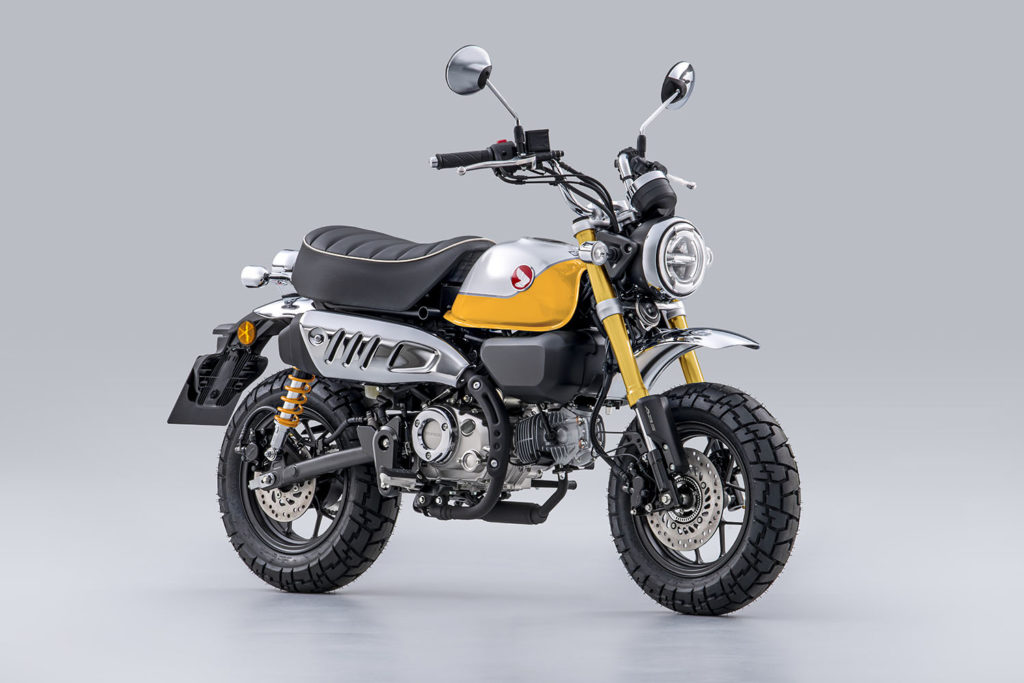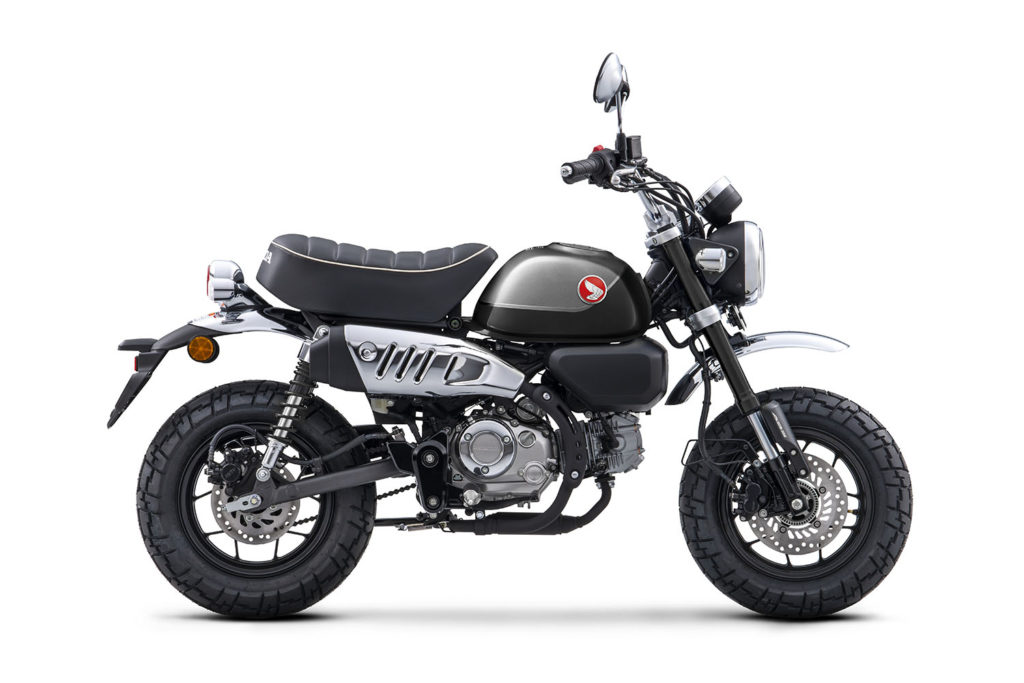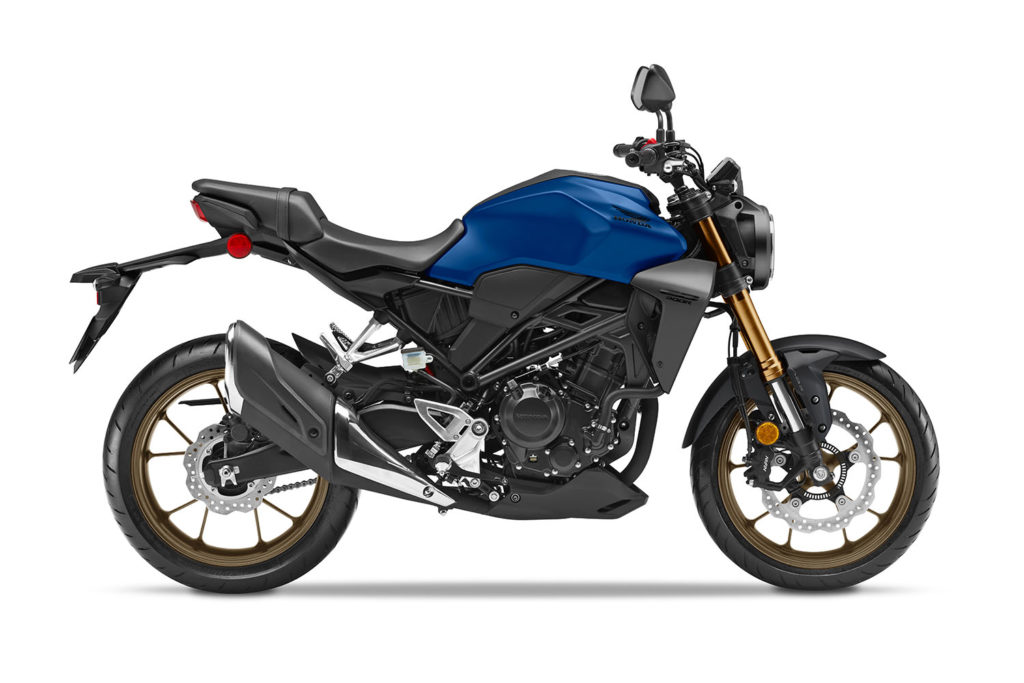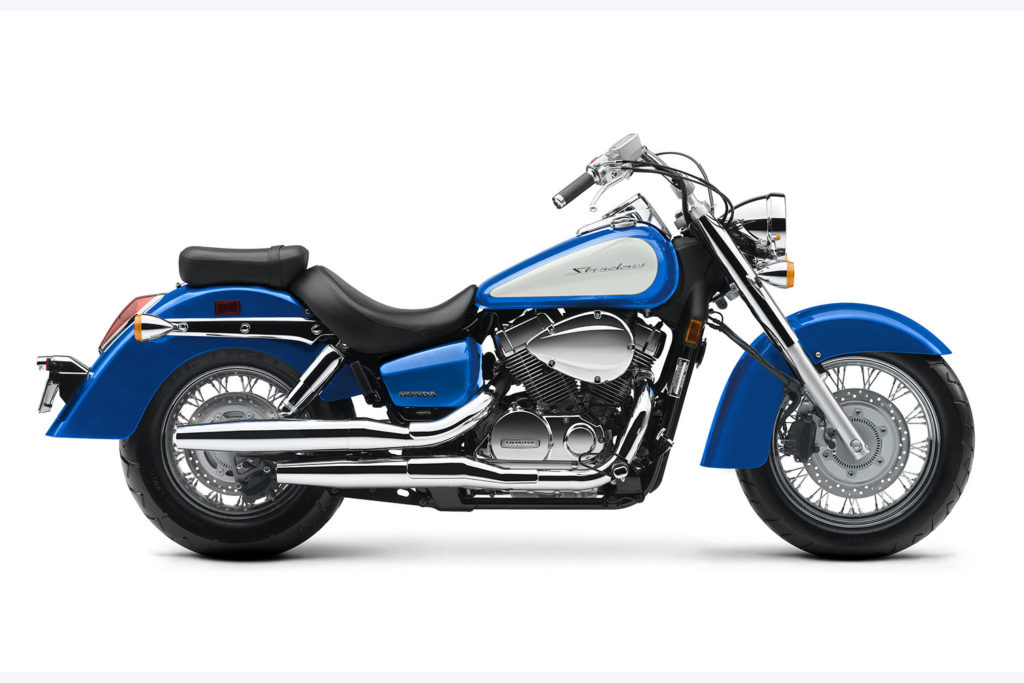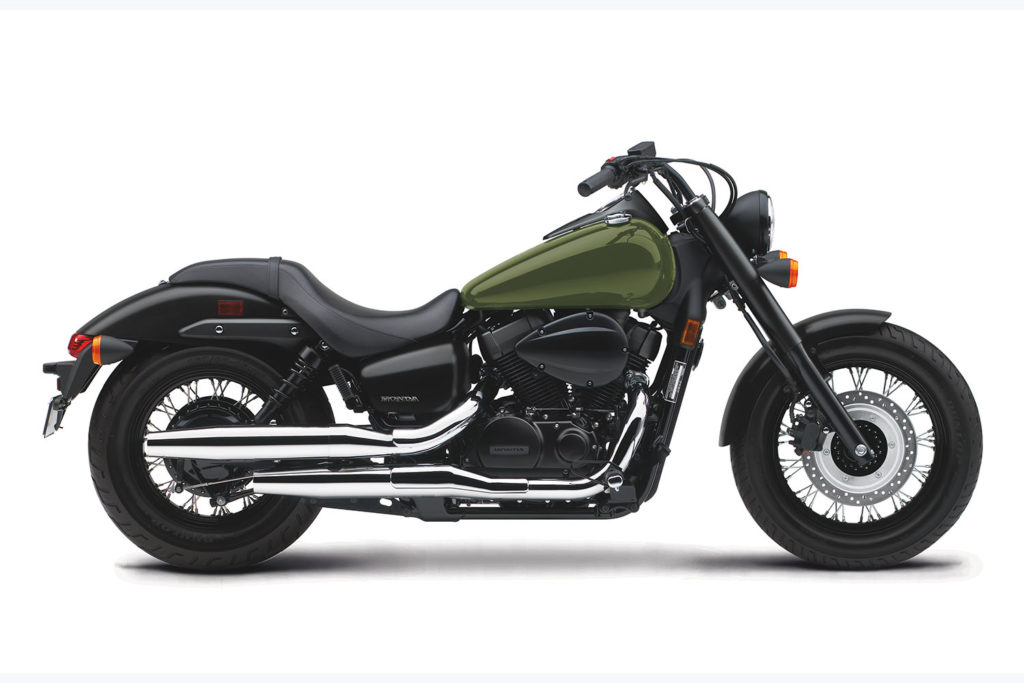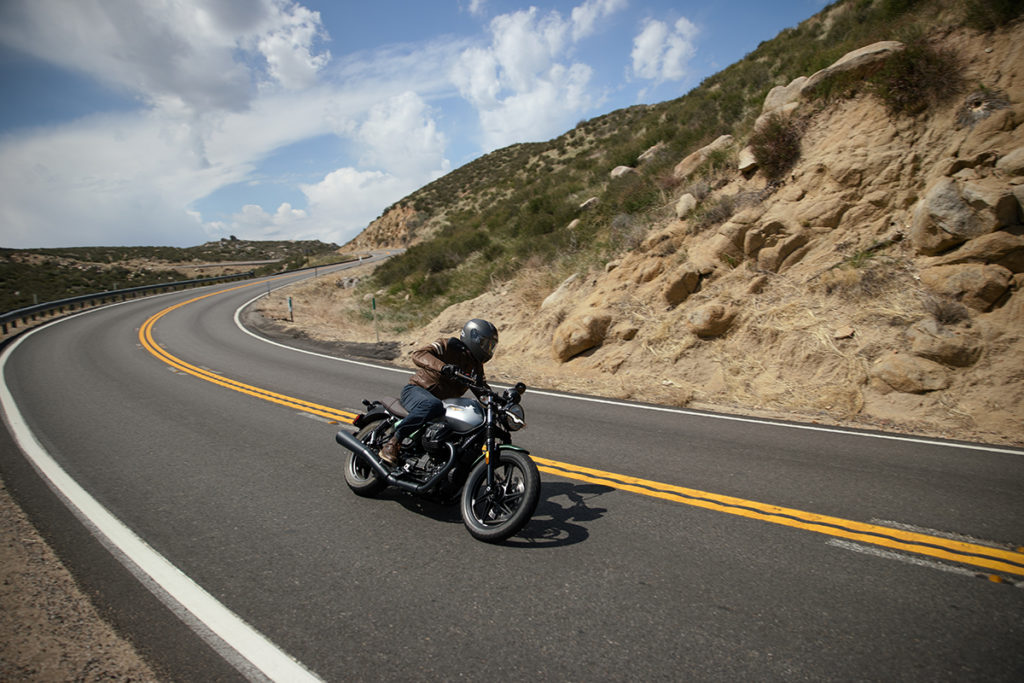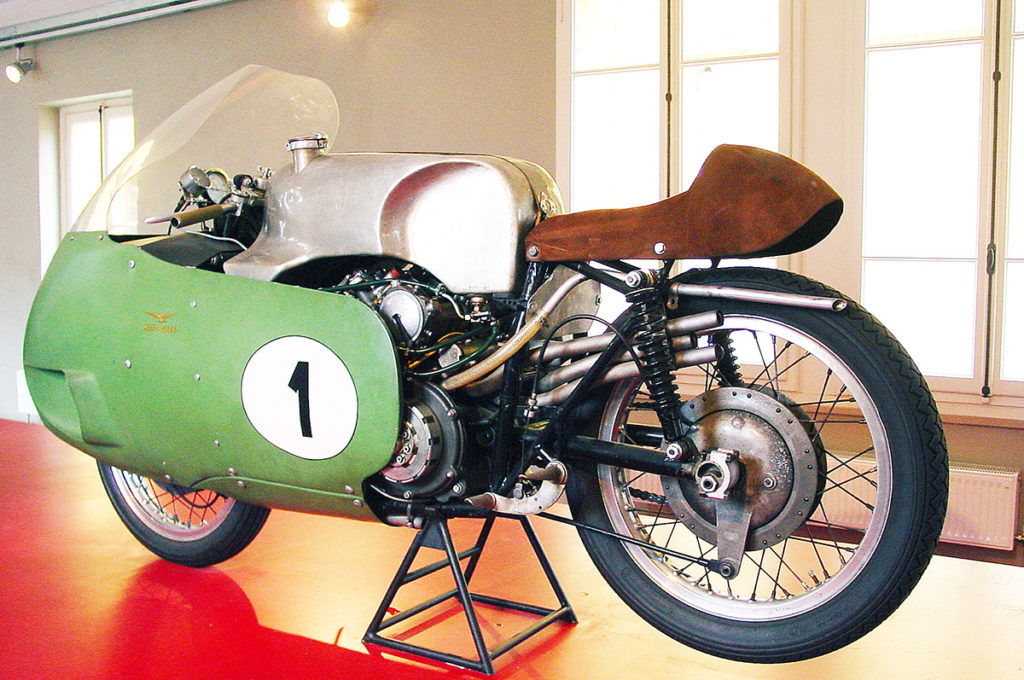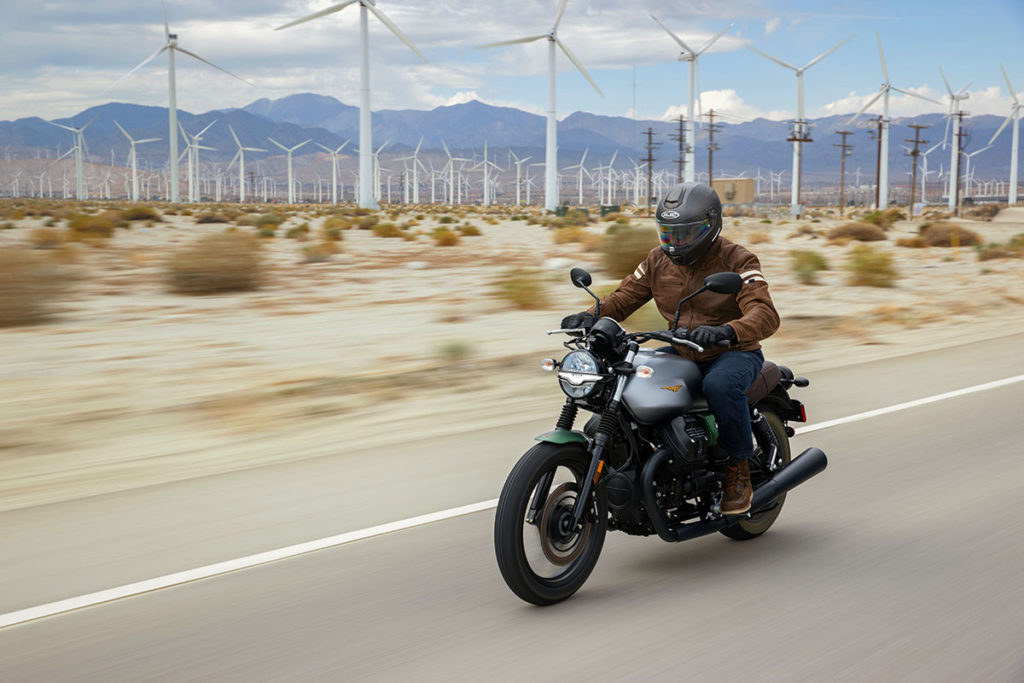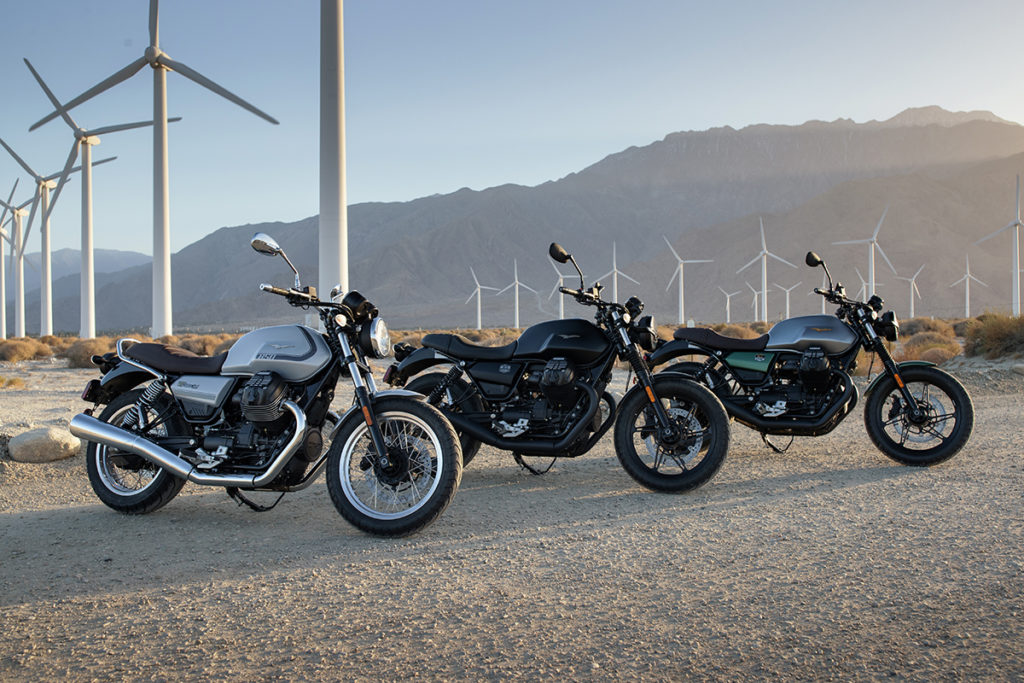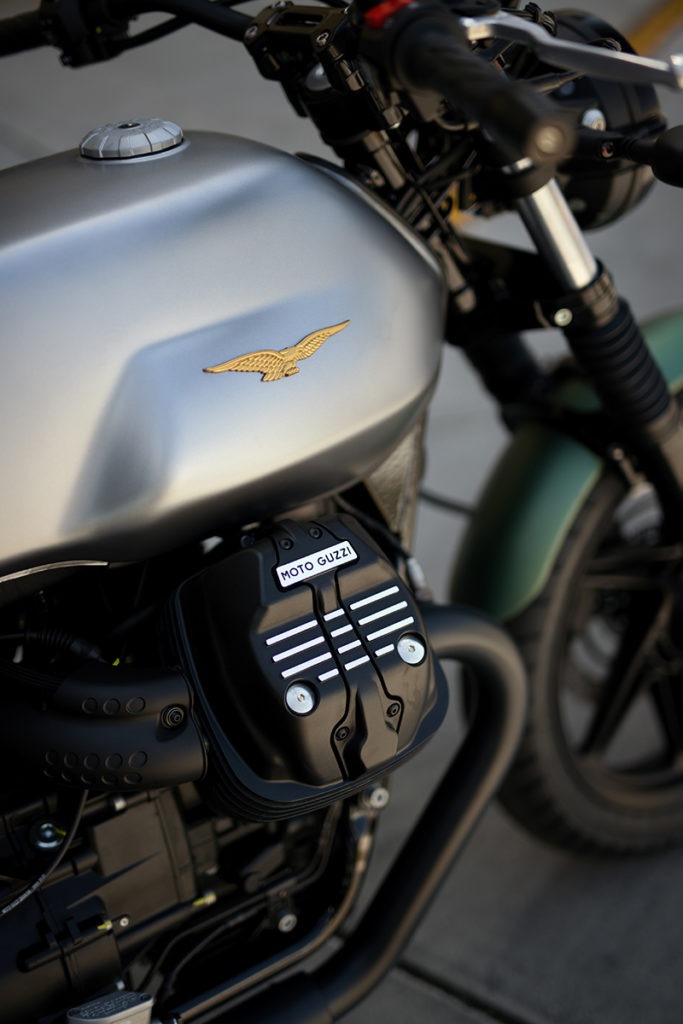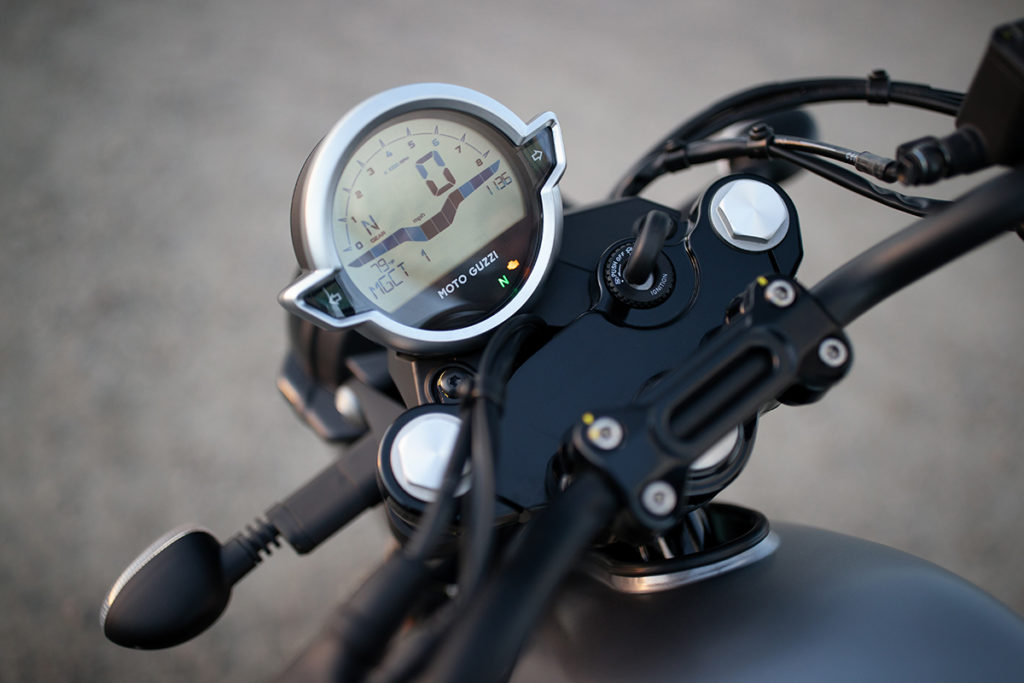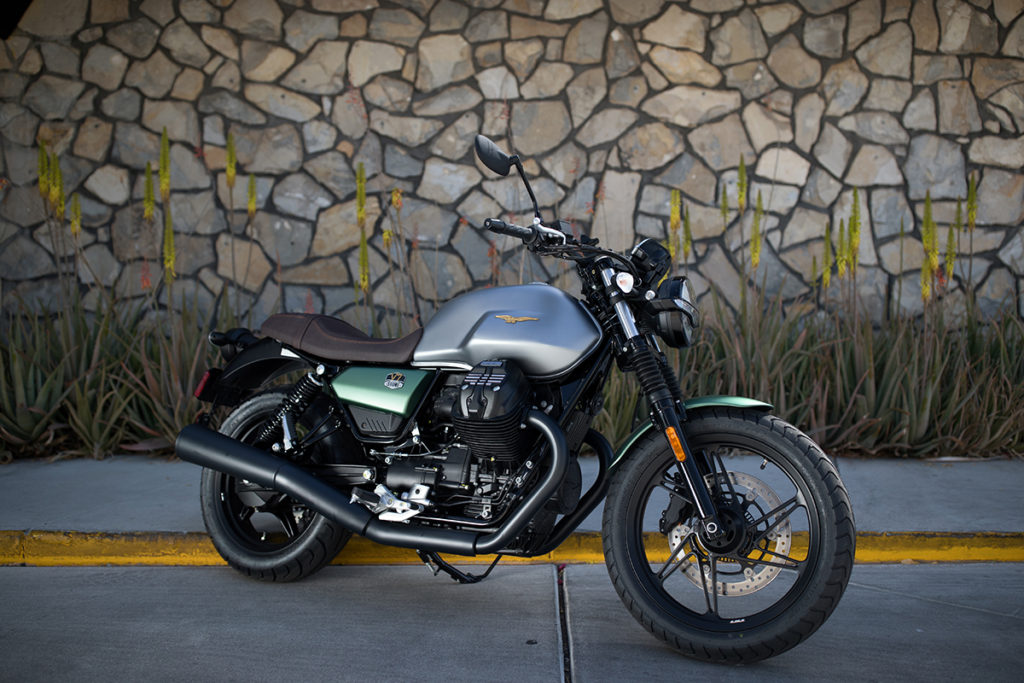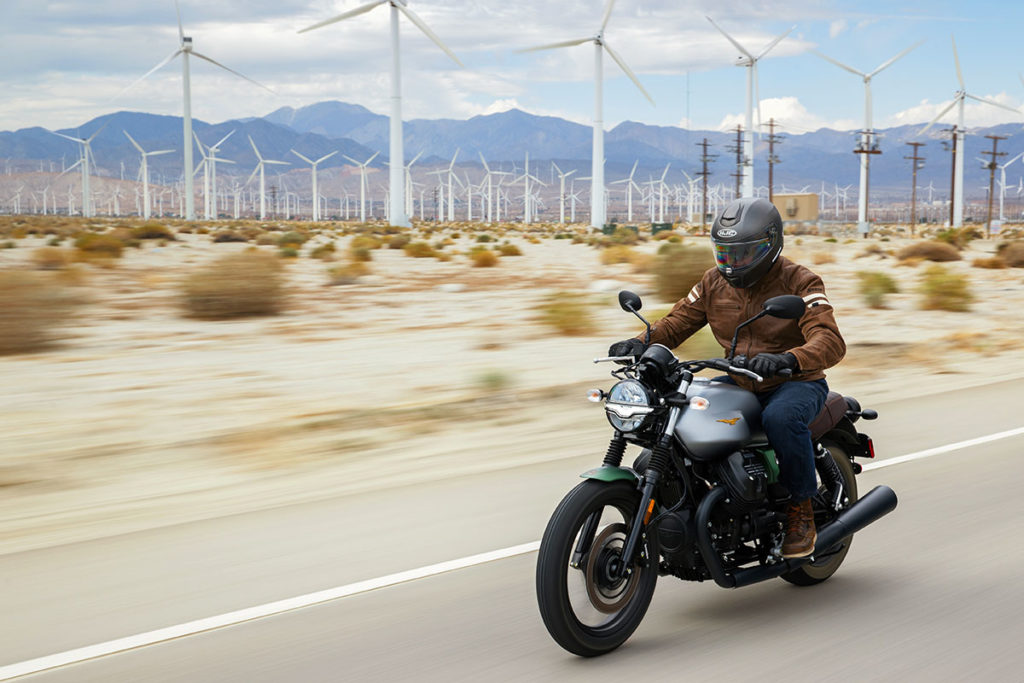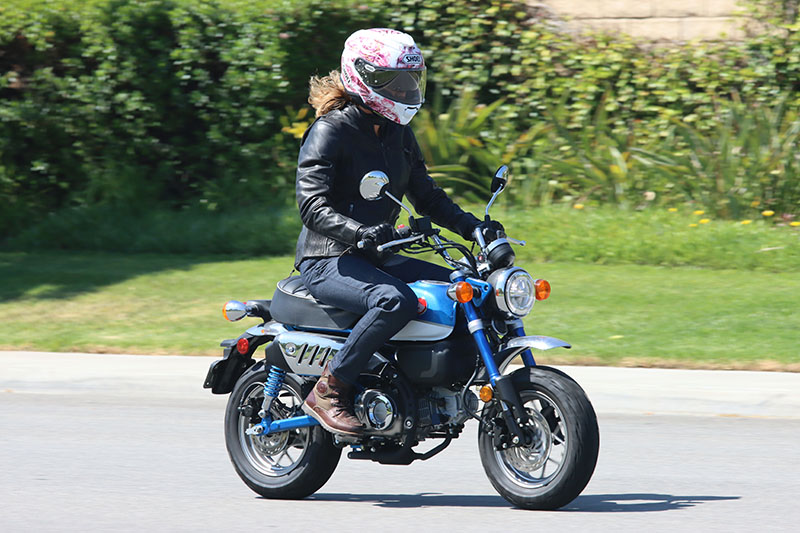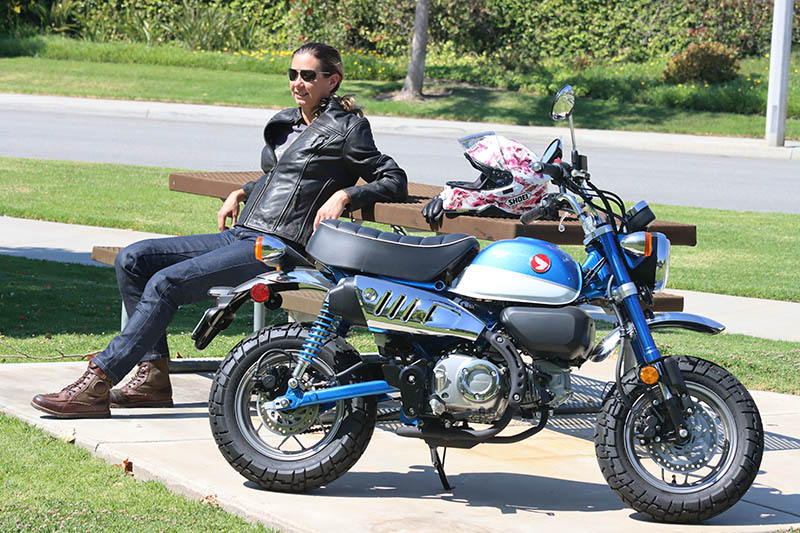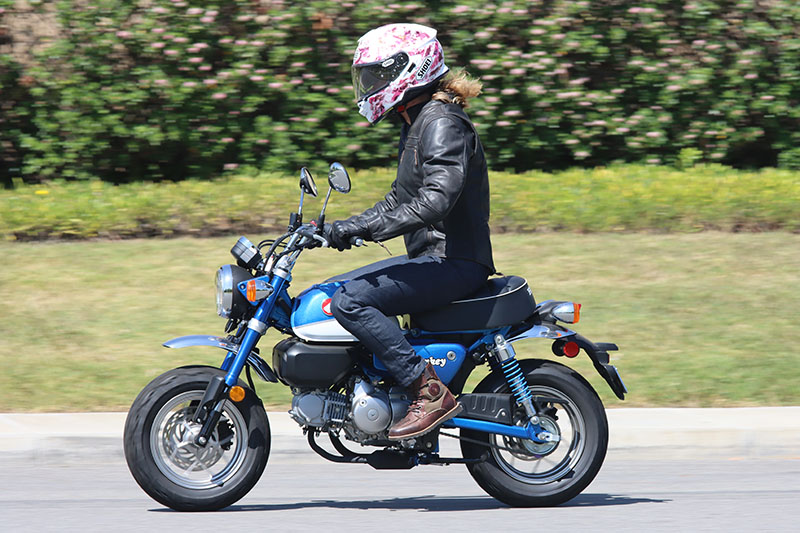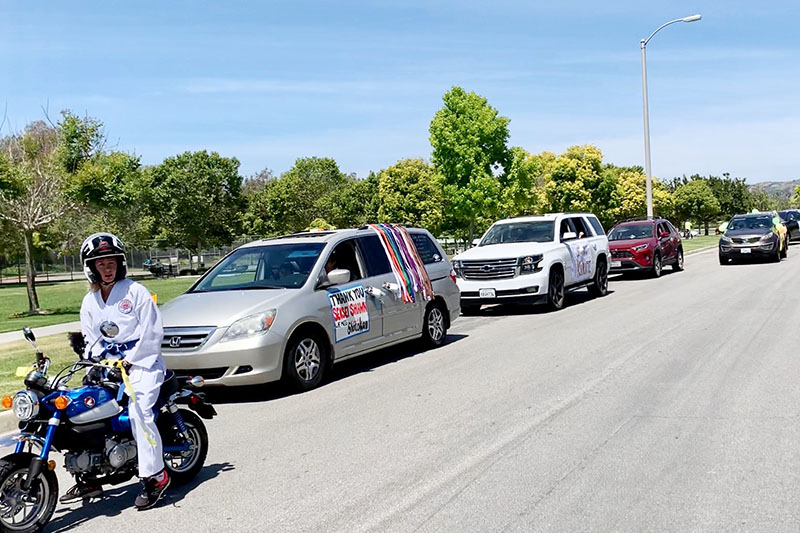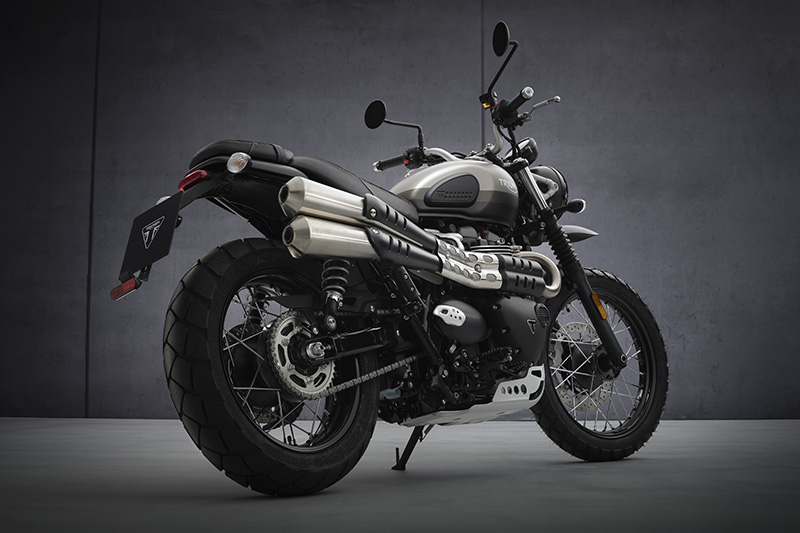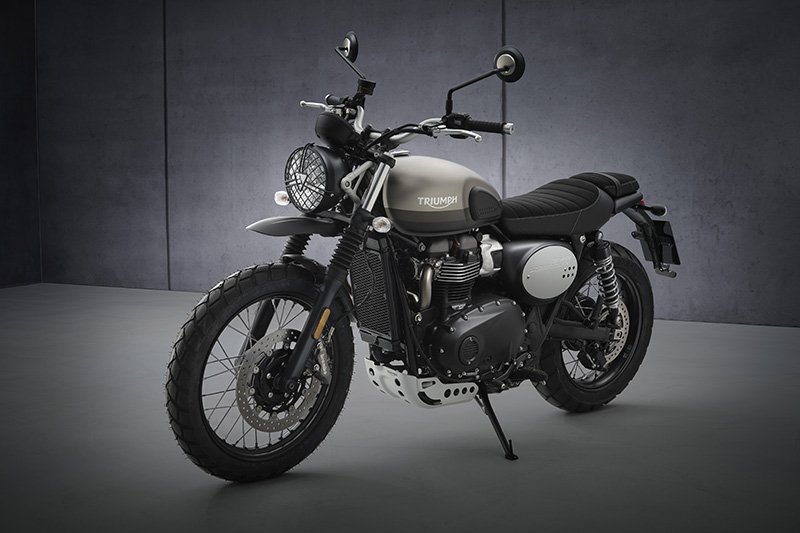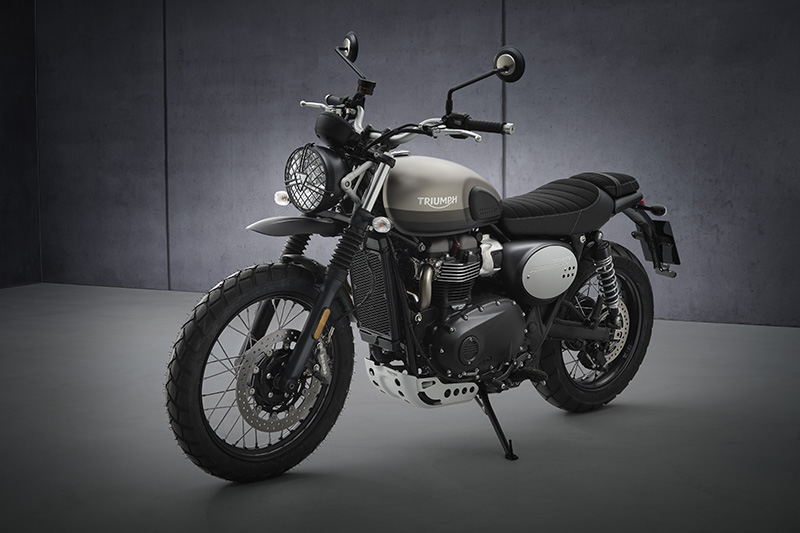This 2021 motorcycle buyers guide includes new or significantly updated street-legal models available in the U.S. It includes bikes in many categories, including adventure, cafe racer, cruiser, sport, sport-touring, retro, touring, and others.
Organized in alphabetical order by manufacturer, it includes photos and links to details or, when available, first rides and road test reviews of each motorcycle. Due to the pandemic and supply chain disruptions, some manufacturers skipped the 2021 model year. Stay tuned for our 2022 Motorcycle Buyers Guide.
RELATED: 2020 Motorcycle Buyers Guide: New Street Models
2021 Aprilia RS 660
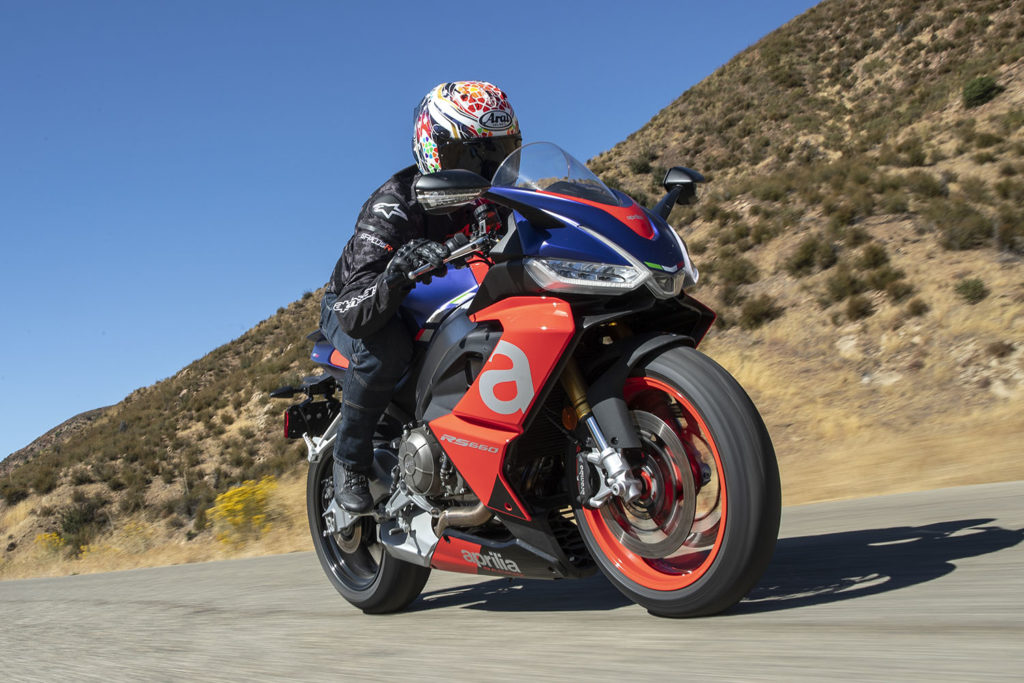
Aprilia‘s RS 660 is the first of three models — the RS 660 sportbike, the Tuono 660 naked bike (below), and the not-yet-released Tuareg 660 adventure bike — built on a new engine platform, a liquid-cooled 659cc parallel-Twin with a 270-degree firing order that makes a claimed 100 horsepower at 10,500 rpm and 49.4 lb-ft of torque at 8,500 rpm. The RS 660 is equipped with the IMU-enabled APRC (Aprilia Performance Ride Control) electronics package with five ride modes, 3-level cornering ABS, 3-level traction control, wheelie control, cruise control, and engine braking management. Pricing starts at $11,299.
Read our 2021 Aprilia RS 660 First Ride Review
Watch our 2021 Aprilia RS 660 Video Review
2021 Aprilia RSV4 / RSV4 Factory
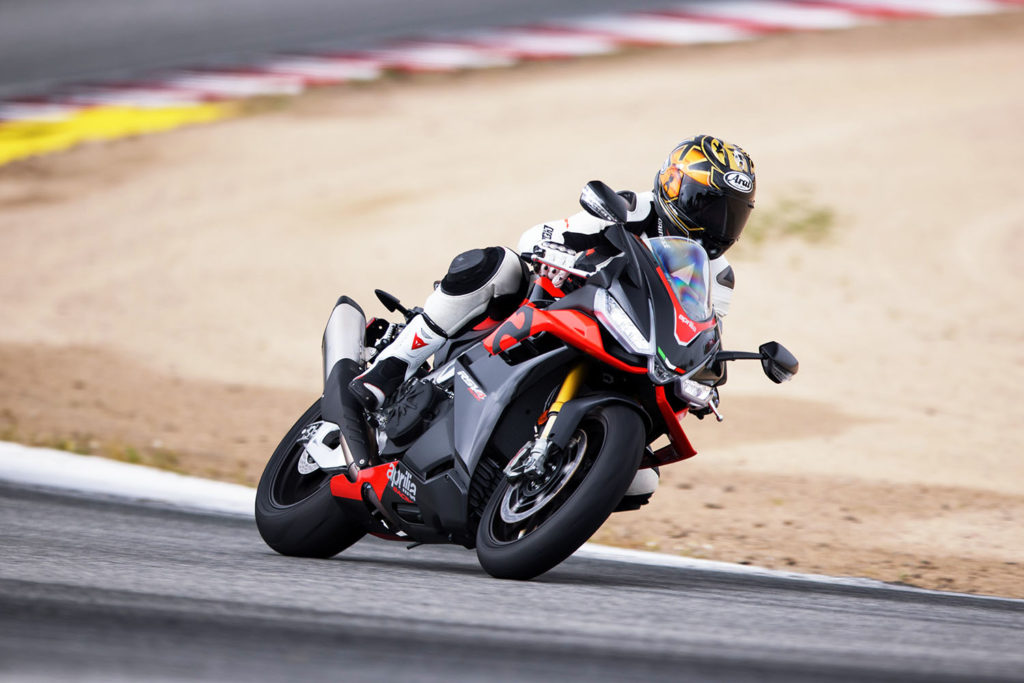
Aprilia is an Italian brand known for performance, and the RSV4 and RSV4 Factory are at the pointy end of the company’s go-fast spear. Both are powered by a 1,099cc, 65-degree V-4 that Aprilia says cranks out an eye-watering 217 horsepower at 13,000 rpm and 92 lb-ft of torque at 10,500 rpm, even while meeting strict Euro 5 emissions regulations. And both are equipped with a 6-axis IMU and the APRC (Aprilia Performance Ride Control) suite of rider aids. Whereas the standard RSV4 features fully adjustable Sachs suspension, the RSV4 Factory is equipped with Öhlins Smart EC 2.0 semi-active suspension, with a 43mm NIX upside-down fork, a TTX rear shock, and an electronic steering damper. The RSV4 has cast wheels and the RSV4 Factory has lighter and stronger forged wheels. MSRP for the RSV4 is $18,999 and MSRP for the RSV4 Factory is $25,999.
Read our 2021 Aprilia RSV4 Factory First Ride Review
2021 Aprilia Tuono 660
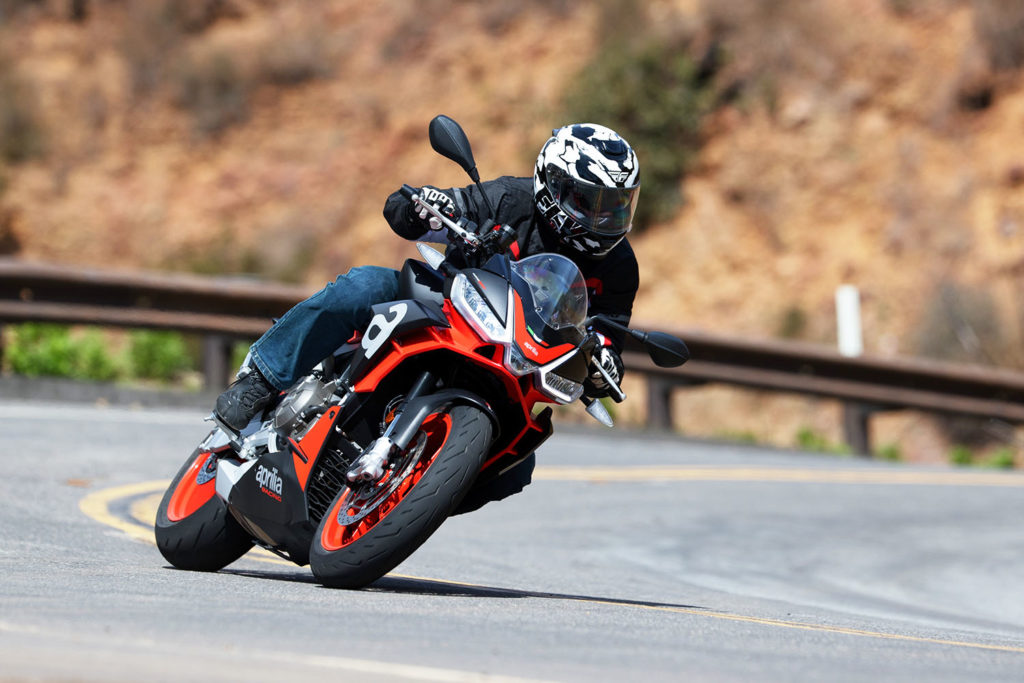
Based on the RS 660 (above), the Aprilia Tuono 660 is a semi-naked sportbike with a more upright seating position, and more street-oriented steering geometry. Its base price is $10,499.
Read our 2021 Aprilia Tuono 660 First Ride Review
Watch our 2021 Aprilia Tuono 660 Video Review
2021 Aprilia Tuono V4 / Tuono V4 Factory
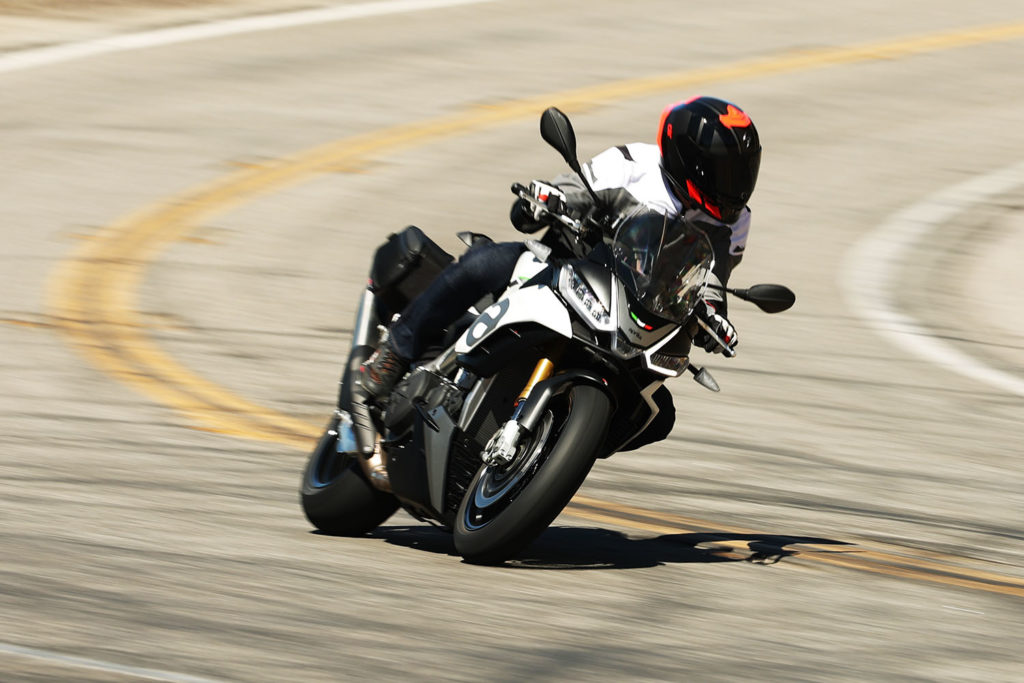
The Tuono name has always been associated with top-of-the-line street performance, and the Aprilia Tuono V4 and Tuono V4 Factory carry the cred with a 1,077cc V-4 that produces 175 horsepower and 89 lb-ft of torque at the crank (claimed). The Tuono V4 is the more street-focused of the two, with a taller windscreen, a higher handlebar, and optional saddlebags (as shown above), and it is equipped with fully adjustable Sachs suspension. The Tuono V4 Factory is equipped with Öhlins Smart EC 2.0 semi-active suspension. Both models feature a six-axis IMU that supports the APRC electronics suite. MSRP for the Tuono V4 is $15,999 and MSRP for the Tuono V4 Factory is $19,499.
Read our 2021 Aprilia Tuono V4 / Factory First Ride Review
2021 Benelli Leoncino / Leoncino Trail
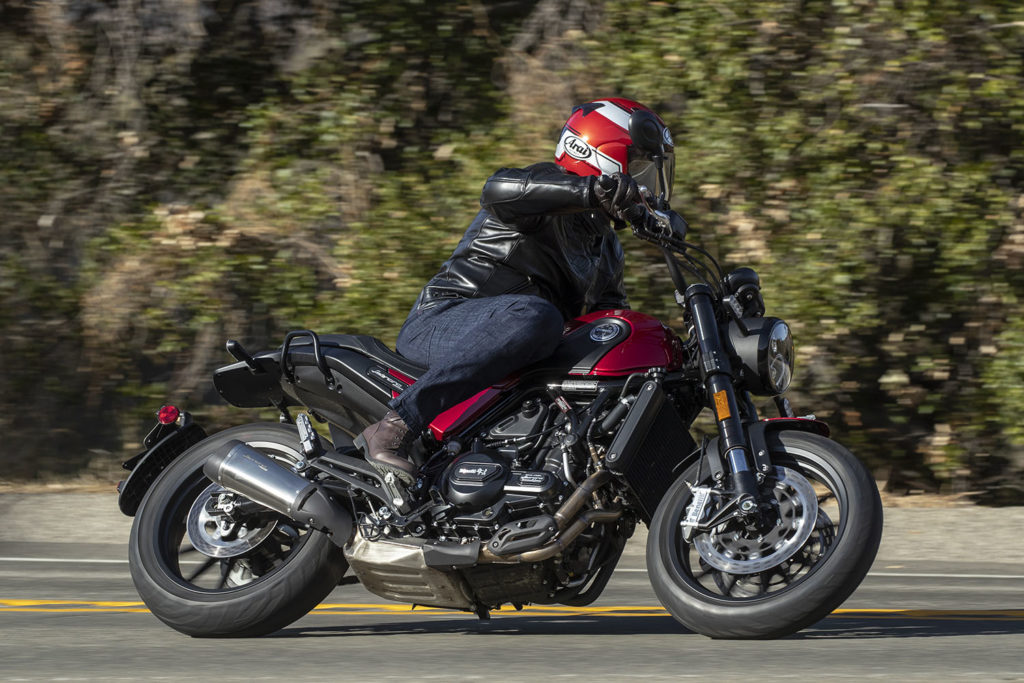
The Benelli Leoncino (“little lion”) is an Italian-designed, Chinese-manufactured roadster powered by a liquid-cooled 500cc parallel-Twin also found in the TRK502X adventure bike (below). In the U.S., the Leoncino is part of a two-bike lineup, which includes the standard street-biased roadster model (shown above) and the Leoncino Trail, a scrambler variant with more suspension travel and spoked wheels with a 19-inch front and 90/10 adventure tires. The Leoncino comes with standard ABS and is priced at $6,199, while the Leoncino Trail is $7,199.
Read our 2021 Benelli Leoncino Road Test Review
Watch our 2021 Benelli Leoncino Video Review
2021 Benelli TRK502X
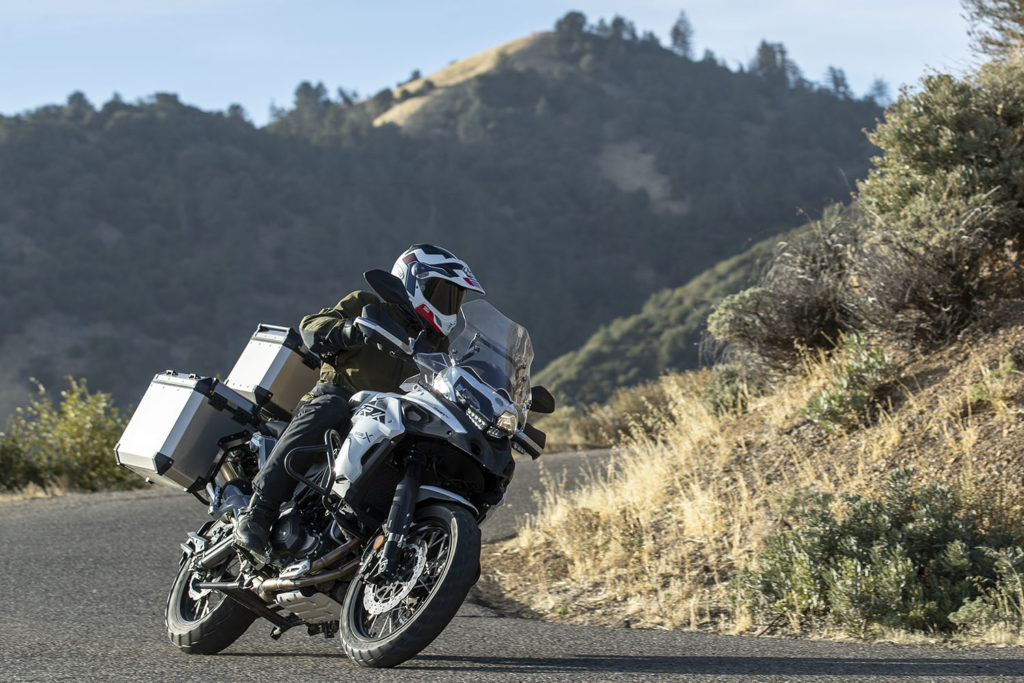
Like the Leoncino above, the Benelli TRK502X is an Italian-designed, Chinese-manufactured adventure bike powered by a liquid-cooled 500cc parallel-Twin. It has a comfortable and upright seating position, a good windscreen, 90/10 adventure tires with a 19-inch front, spoked wheels, ABS, hand and engine guards, and enough luggage capacity to go the distance (aluminum panniers and top box are standard). MSRP is $7,398.
Read our 2021 Benelli TRK502X Road Test Review
2021 BMW R 18 / R 18 First Edition
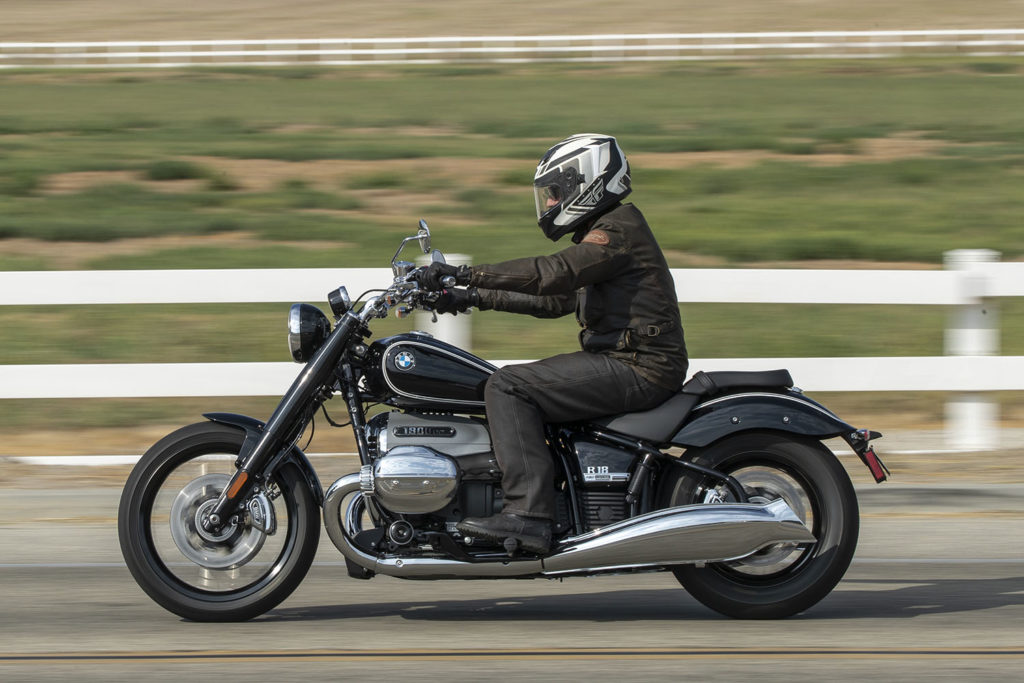
The BMW R 18 is a cruiser powered by a massive 1,802cc OHV air/oil-cooled 4-valve opposed Twin that’s the largest “boxer” engine the German company has ever produced. Part of BMW’s Heritage line, the R 18 has styling inspired by the 1930s-era R 5. Despite its classic looks, the long, low cruiser is equipped with fully modern electronics, brakes, suspension, and other features. Base price is $17,495. BMW recently announced two touring versions for the 2022 model year, the R 18 B and R 18 Transcontinental, both with a fairing, hard saddlebags, and an infotainment system; the Transcontinental adds a trunk with an integrated passenger backrest.
Read our 2021 BMW R 18 First Edition Road Test Review
2021 Ducati Monster
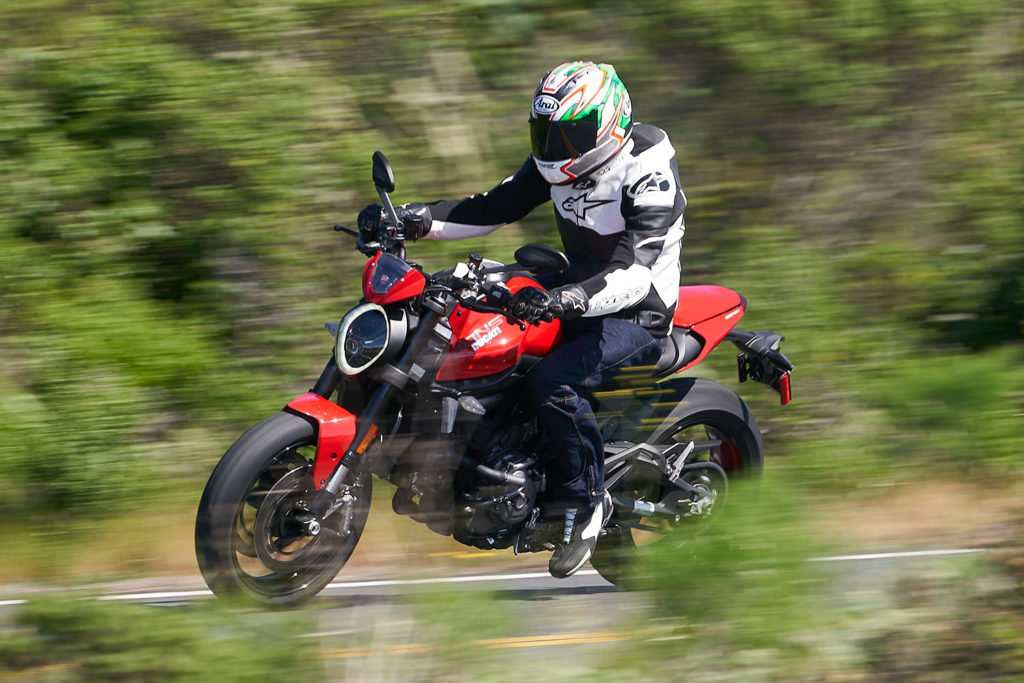
The Ducati Monster is one of the Italian manufacturer’s most iconic and best-selling models. Gone is the trademark tubular-steel trellis frame, replaced with a front-frame design that uses the engine as a structural member of the chassis, as on the Panigale and Streetfighter V4 models. Compared to the previous Monster 821, the new model weighs 40 pounds less and is equipped with a more powerful 937cc Testastretta 11-degree L-Twin engine and top-shelf electronics. New styling and more make this an all-new Monster. Pricing starts at $11,895 for the Monster and $12,195 for the Monster+, which adds a flyscreen and passenger seat cover.
Read our 2021 Ducati Monster First Ride Review
2021 Ducati Multistrada V4
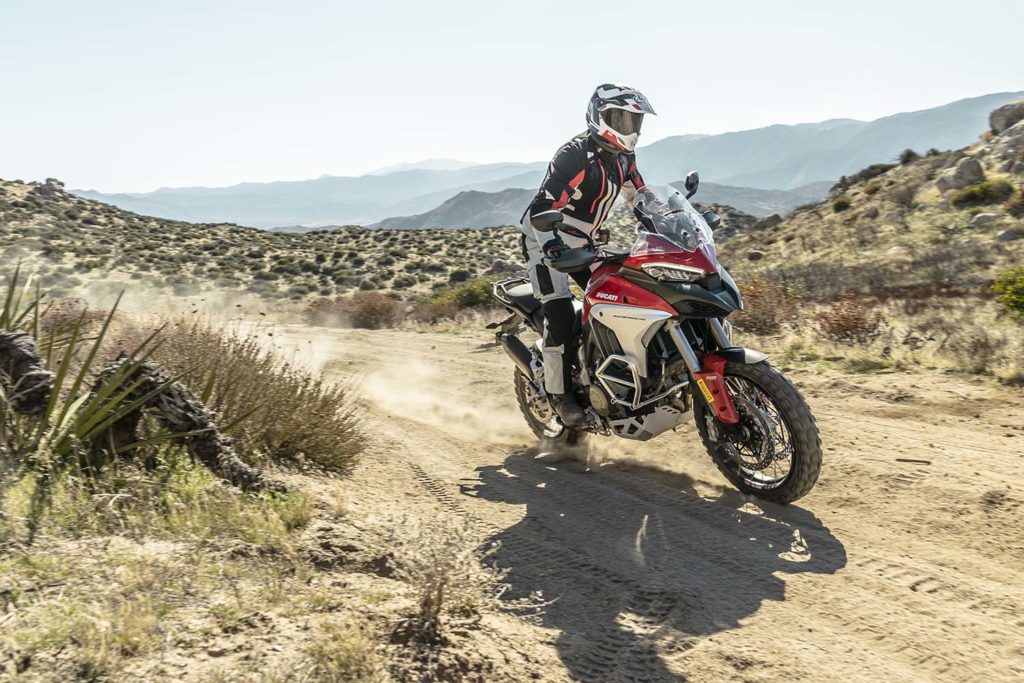
Another top-selling Ducati is the Multistrada adventure bike. For 2021, it is now the Multistrada V4 and it is powered by the 1,158cc 90-degree V4 Grandturismo engine that makes 170 horsepower at 10,500 rpm and stomping 92 lb-ft torque at 8,750 rpm (claimed). Ducati Skyhook semi-active suspension and a full suite of IMU-supported electronics are standard, and S models are equipped with a radar system that enables Adaptive Cruise Control and Blind Spot Detection. New for 2021 is a 19-inch front wheel. Pricing starts at $19,995 for the Multistrada V4 and $24,095 for the Multistrada V4 S.
Read our 2021 Ducati Multistrada V4 S First Ride Review
Watch our 2021 Ducati Multistrada V4 S Video Review
2021 Ducati SuperSport 950
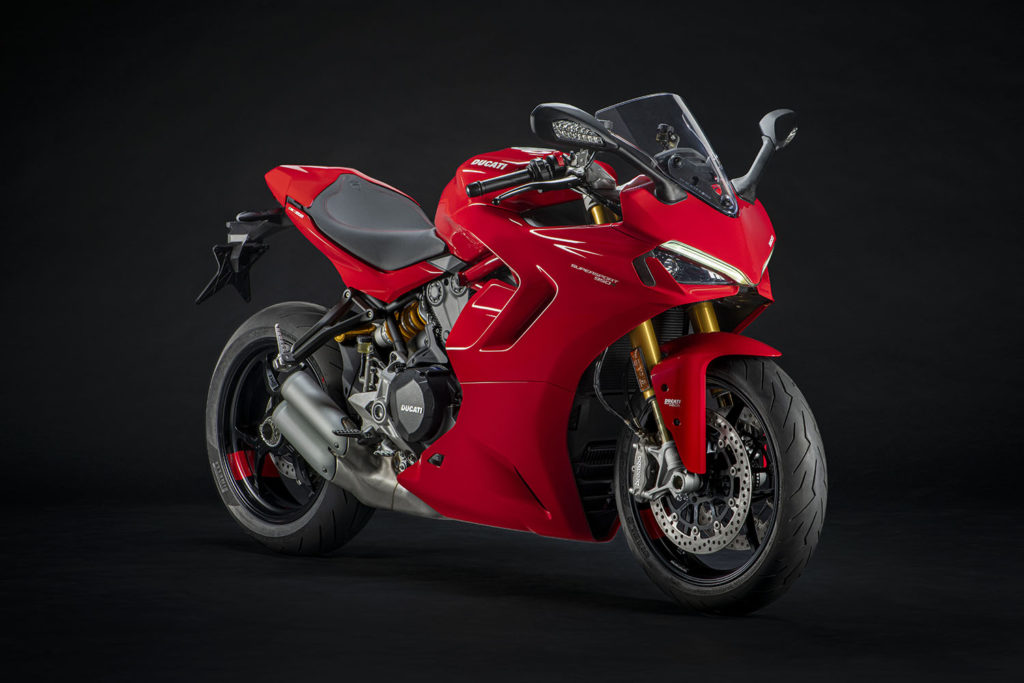
Updates to the Ducati SuperSport 950 include new styling inspired by the Panigale V4, an IMU-enabled electronics package, and improved comfort. The seat is flatter and has more padding, the handlebar is higher, and the footpegs are lower. The SuperSport 950 is powered by a 937cc Testastretta L-Twin that makes 110 horsepower at 9,000 rpm and 68.6 lb-ft of torque at 6,500 rpm (claimed, at the crank). The SuperSport 950 is available in Ducati Red for $13,995. The SuperSport 950 S, which is equipped with fully adjustable Öhlins suspension and a passenger seat cover, is available in Ducati Red and Arctic White Silk starting at $16,195.
2021 Harley-Davidson Electra Glide Revival
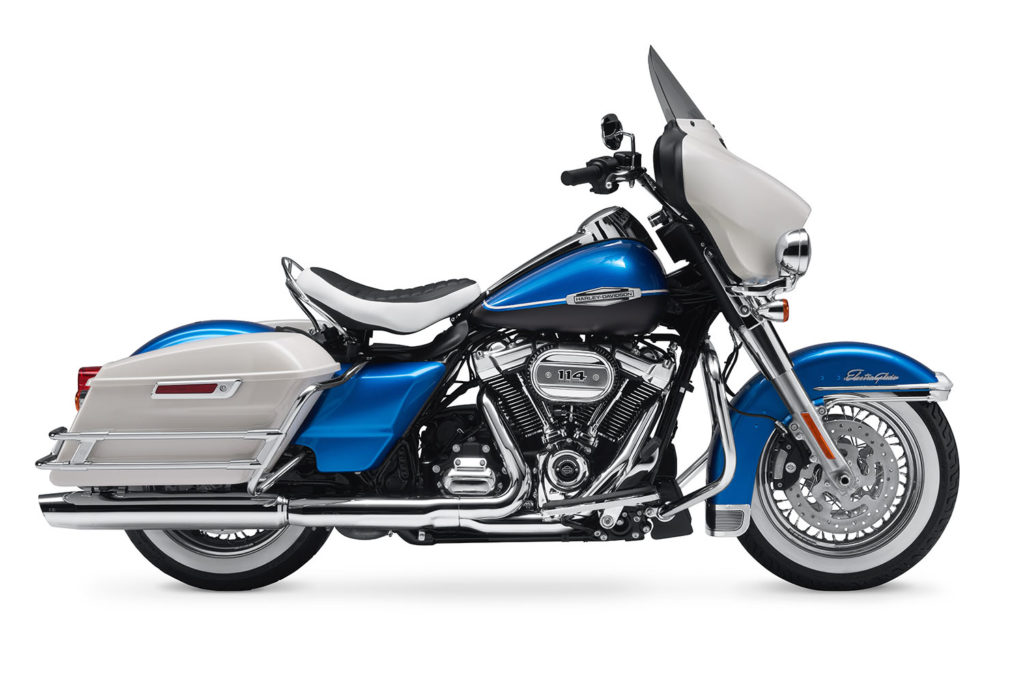
Earlier this year Harley-Davidson announced its new Icons Collection. The first model in the collection is the stunning Electra Glide Revival, which is inspired by the 1969 Electra Glide, the first Harley-Davidson motorcycle available with an accessory “batwing” fairing. Though retro in style, the Electra Glide Revival is powered by a Milwaukee Eight 114 V-twin and is equipped with RDRS Safety Enhancements and a Boom! Box infotainment system. Global production of the Electra Glide Revival is limited to a one-time build of 1,500 serialized examples, with an MSRP of $29,199.
Read our 2021 Harley-Davidson Electra Glide Revival First Look Review
2021 Harley-Davidson Fat Boy 114
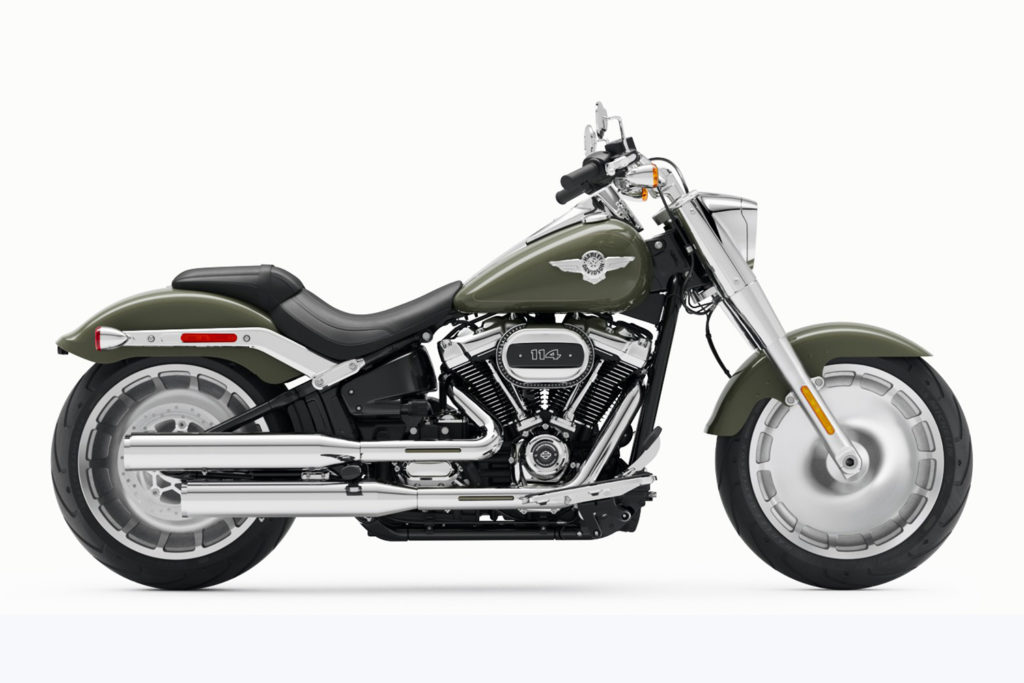
With its iconic solid aluminum 18-inch Lakester wheels, for 2021 Harley-Davidson gave the Fat Boy 114 a new look with lots of chrome and bright work. Powering the Fat Boy is none other than the torquey Milwaukee-Eight 114 V-twin engine, equipped with a 6-speed gearbox and putting down a claimed 119 ft-lb of torque at just 3,000 rpm. Pricing starts at $19,999.
Read our 2021 Harley-Davidson Fat Boy 114 First Look Review
2021 Harley-Davidson Pan America 1250 / Pan America 1250 Special
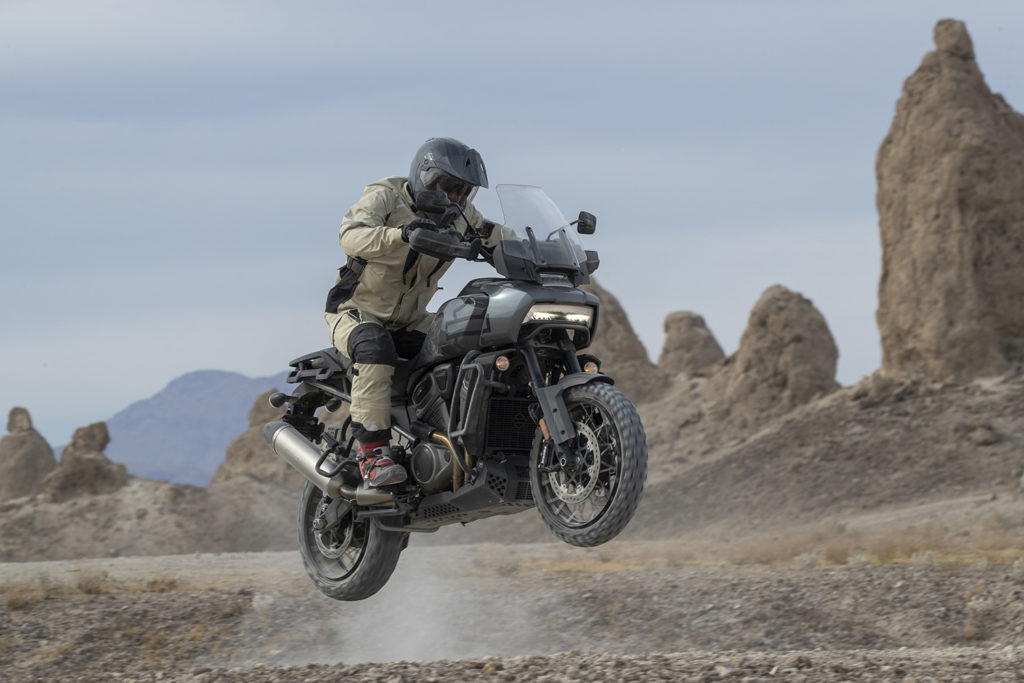
A competitive, state-of-the-art, 150-horsepower adventure bike built by Harley-Davidson? Yea, right, when pigs fly! Well, the Motor Company came out swinging with its Pan America 1250 and Pan America 1250 Special. Powered by the all-new Revolution Max 1250, a liquid-cooled, 1,252cc, 60-degree V-Twin with DOHC, 4 valves per cylinder, and variable valve timing. The killer app is the optional Adaptive Ride Height, which lowers the higher-spec Pan America 1250 Special (which is equipped with semi-active Showa suspension) by 1 to 2 inches when the bike comes to a stop. Pricing starts at $17,319 for the Pan America 1250 and $19,999 for the Pan America 1250 Special.
Read our 2021 Harley-Davidson Pan America 1250 Special First Ride Review
Watch our 2021 Harley-Davidson Pan America 1250 Special Video Review
2021 Harley-Davidson Road Glide Special
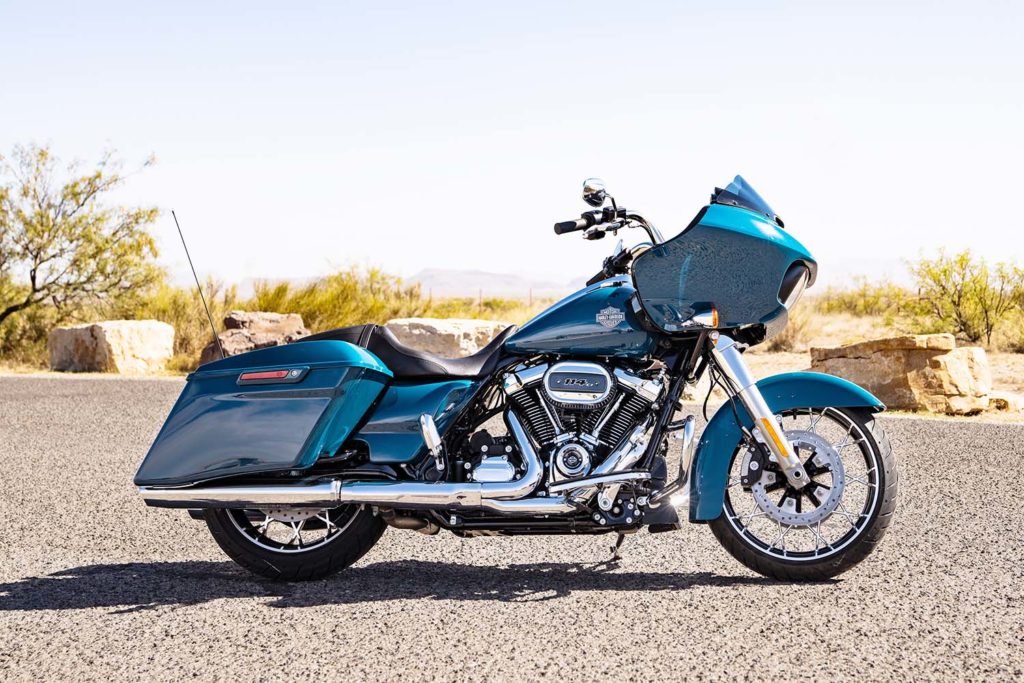
For Harley-Davidson Touring models like the Road Glide, Road King, and Street Glide, there are Special models that offer a slammed look and 119 lb-ft of torque from the Milwaukee-Eight 114 V-Twin. The 2021 Harley-Davidson Road Glide Special is available with new two-tone paint options, and with a choice of a blacked-out or bright chrome styling treatments. All Special models are now equipped with the high-performance Ventilator air cleaner with a washable filter element, and a new low-profile engine guard. Pricing starts at $26,699.
2021 Harley-Davidson Sportster S
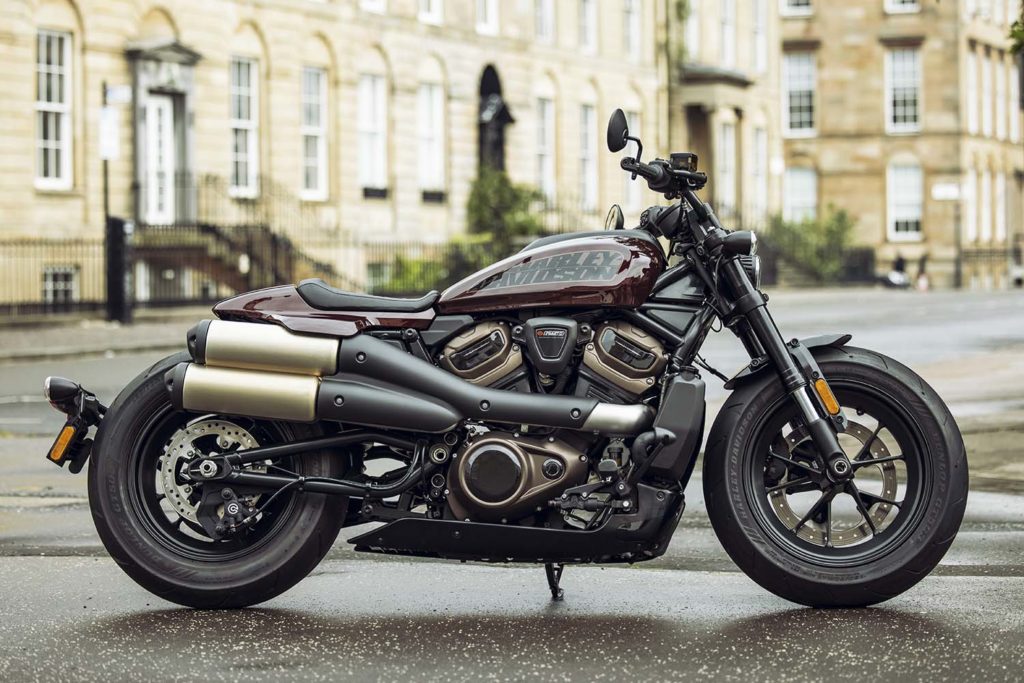
The (air-cooled) Sportster is dead, long live the (liquid-cooled) Sportster! Visually similar to the 1250 Custom teased several years ago, the 2021 Harley-Davidson Sportster S represents a new era for the legendary Sportster line. Since the introduction of the XL model family in 1957, Sportsters have always been stripped-down motorcycles powered by air-cooled V-Twins. Harley calls the new Sportster S a “sport custom motorcycle,” and at the heart of the machine is a 121-horsepower Revolution Max 1250T V-Twin, a lightweight chassis, and premium suspension. Pricing starts at $14,999.
Read our 2021 Harley-Davidson Sportster S First Look Review
2021 Harley-Davidson Street Bob 114
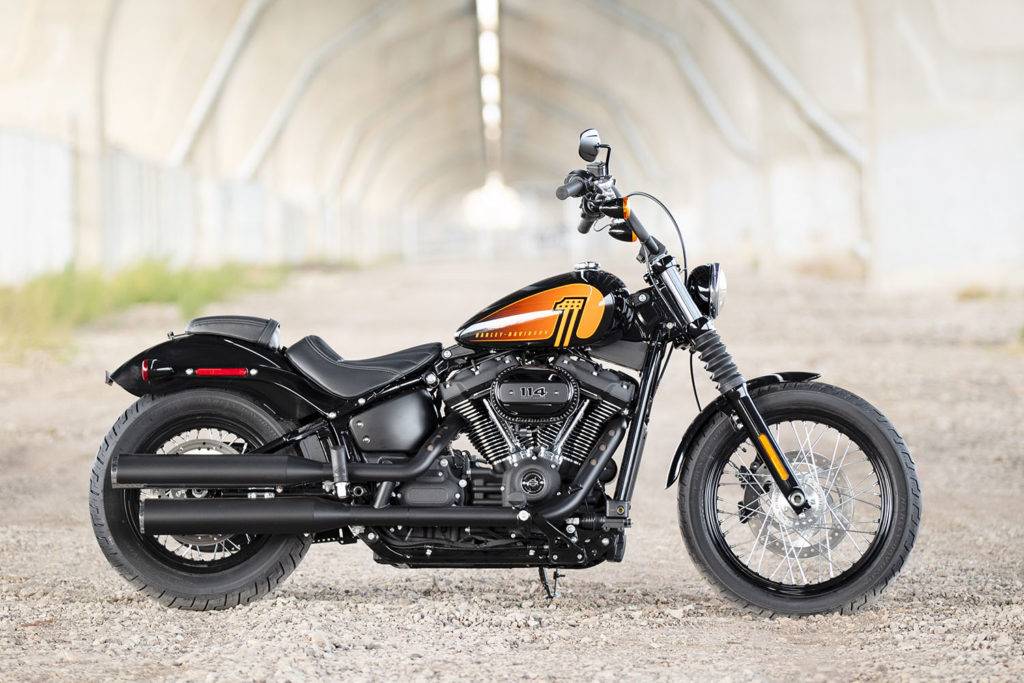
The Street Bob, with its mini-ape handlebar, mid-mount controls, and bobber-style fenders, has become a fan favorite among those looking for a minimalist American V-twin to customize. The 2021 Harley-Davidson Street Bob 114 packs more punch, thanks to the larger, torque-rich Milwaukee-Eight 114 engine. Pricing starts at $14,999.
Read our 2021 Harley-Davidson Street Bob 114 First Look Review
2021 Harley-Davidson Street Glide Special
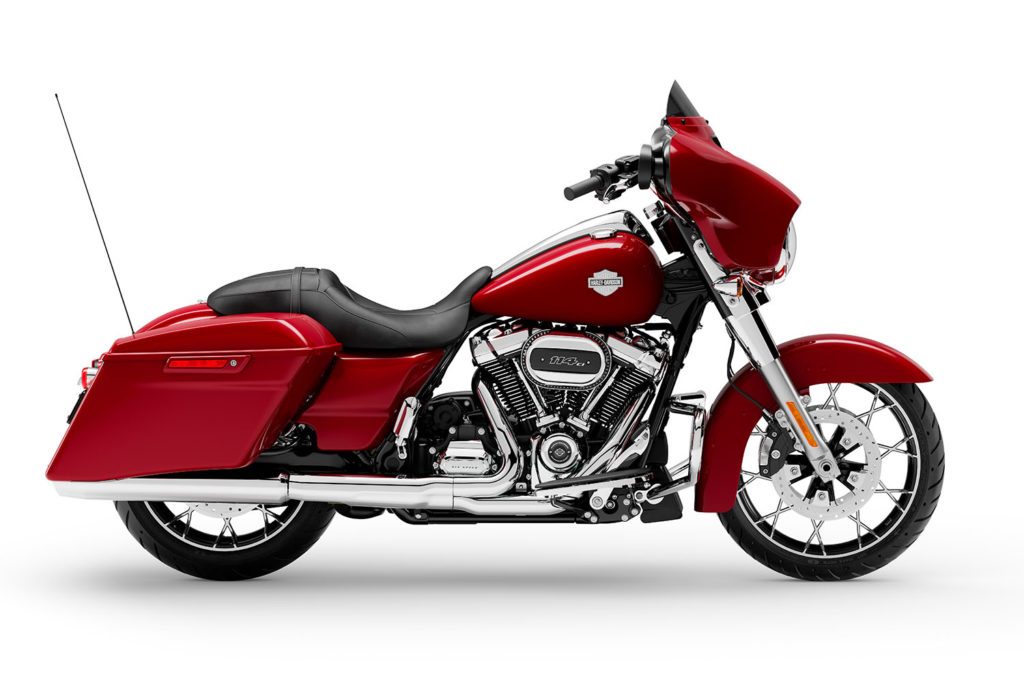
With a slammed look and 119 lb-ft of torque from the Milwaukee-Eight 114 V-Twin, the 2021 Harley-Davidson Street Glide Special is available with new two-tone paint options, and with a choice of a blacked-out or bright chrome styling treatments. All Special models are now equipped with the high-performance Ventilator air cleaner with a washable filter element, and a new low-profile engine guard. Pricing starts at $27,099.
Harley-Davidson Unveils Arctic Blast Limited Edition Street Glide Special
2021 Honda ADV150
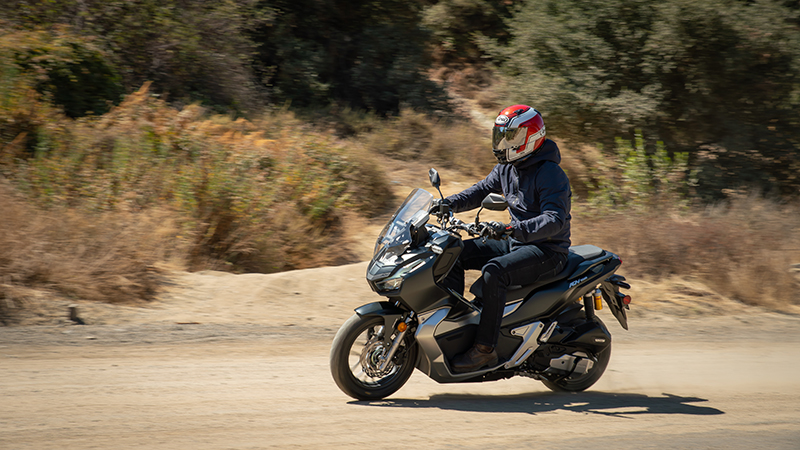
The 2021 Honda ADV150 is an ADV-styled scooter, essentially a Honda PCX150 with longer travel Showa suspension (5.1/4.7 inches front/rear) and a larger ABS-equipped 240mm disc brake at the bow and a drum brake without ABS in the stern. Its powered by a liquid-cooled 149cc Single and has an automatic V-matic transmission. Pricing starts at $4,199.
Read our 2021 Honda ADV150 First Ride Review
2021 Honda CBR1000RR-R Fireblade SP
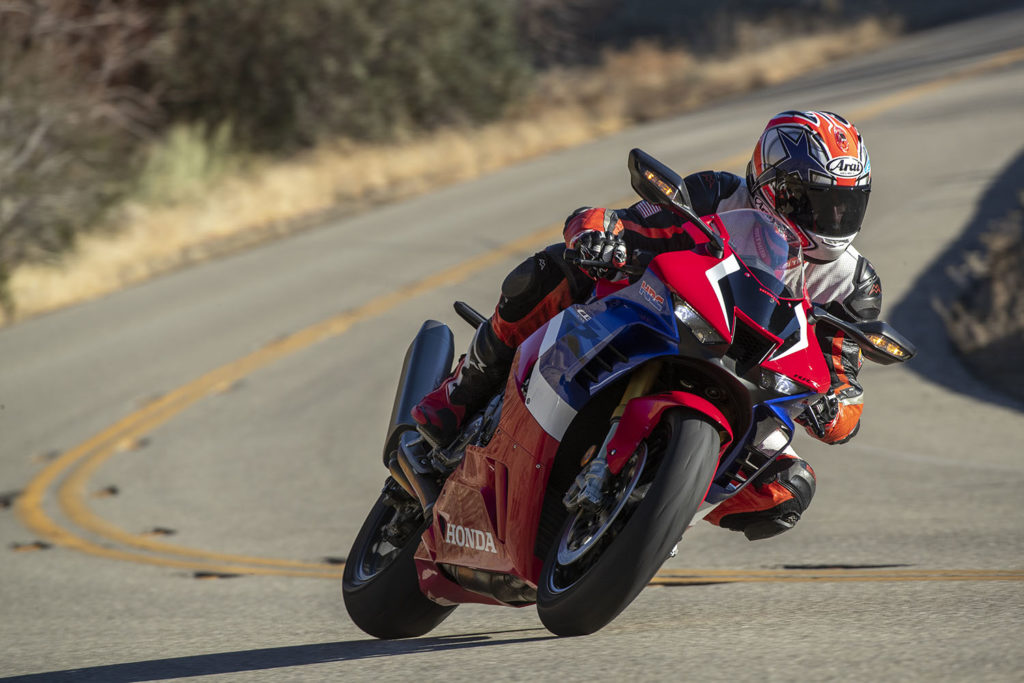
Well-mannered motorcycles seldom make racing history, and the 2021 Honda CBR1000RR-R Fireblade SP was developed with one uncompromising goal — win superbike races at all costs. It’s powered by an inline-Four that we dyno tested at 175 horsepower at the rear wheel, and it’s equipped with Öhlins semi-active suspension, IMU-enabled electronics, and top-shelf braking hardware. And it’s street legal and available for purchase from your local Honda dealer. MSRP is $28,500.
Read our 2021 Honda CBR1000RR-R Fireblade SP Road Test Review
Watch our 2021 Honda CBR1000RR-R Fireblade SP Video Review
2021 Honda CRF300L
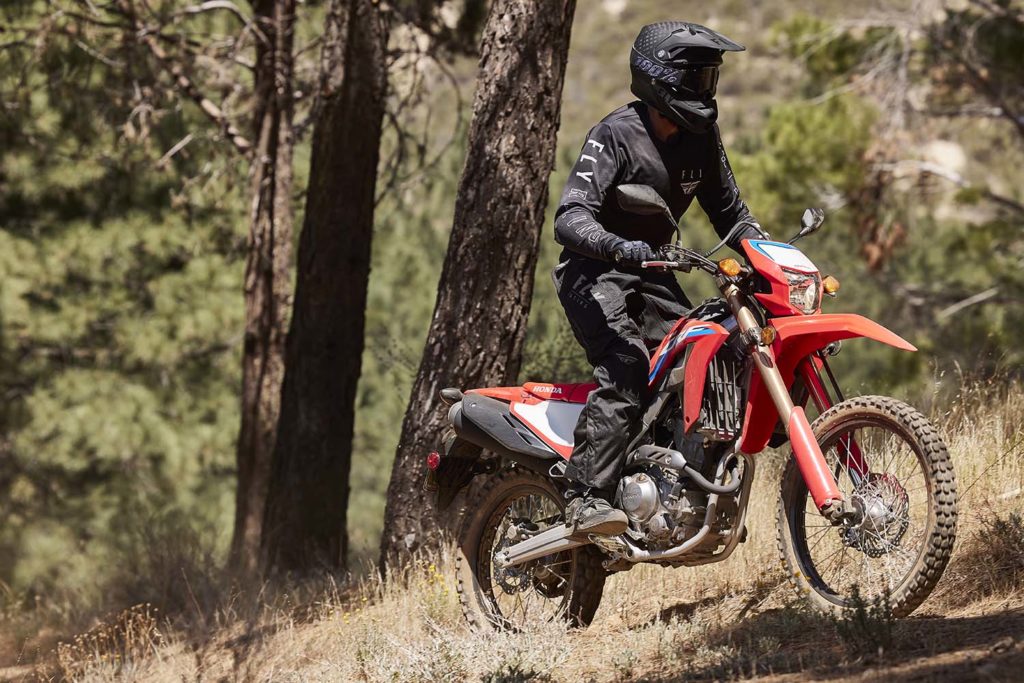
The 2021 Honda CRF300L (above) and CRF300L Rally (below) dual-sports share the same powerplant, a liquid-cooled 286cc Single which boasts 15% more displacement, power, and torque than its 250cc predecessor. They have a new slip/assist clutch, revised steering geometry, less weight, and a new LCD meter. The CRF300L has a base price of $5,249 (add $300 for ABS), weighs 309 pounds, has a 2.1-gallon tank, and has a 34.7-inch seat height.
Read our 2021 Honda CRF300L and CRF300L Rally First Ride Review
2021 Honda CRF300L Rally
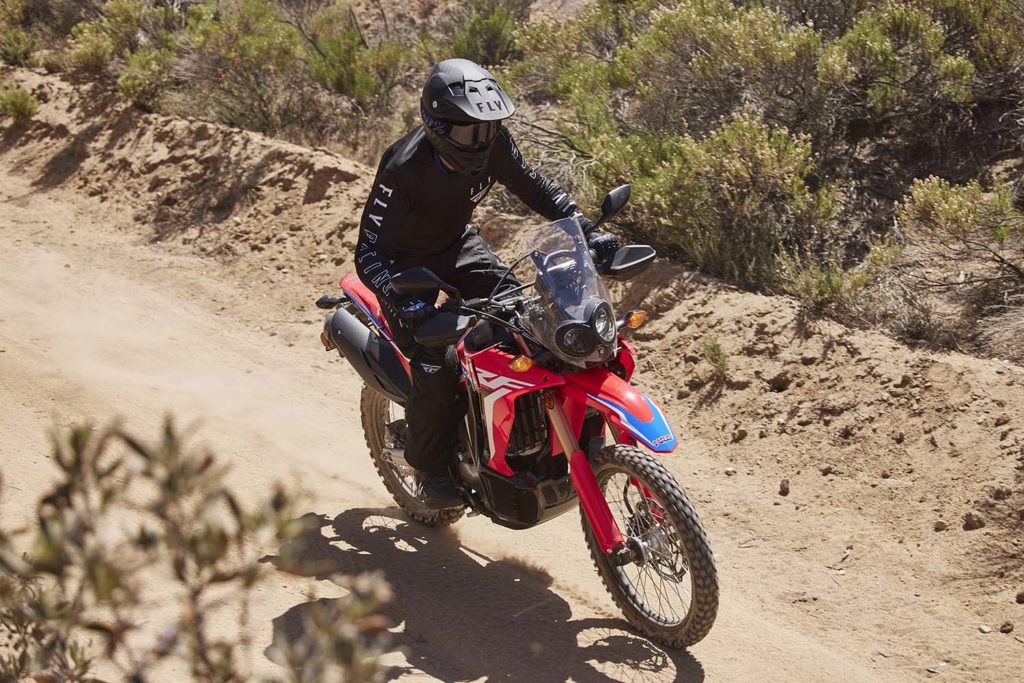
The 2021 Honda CRF300L and CRF300L Rally (above) dual-sports share the same powerplant, a liquid-cooled 286cc Single which boasts 15% more displacement, power, and torque than its 250cc predecessor. They have a new slip/assist clutch, revised steering geometry, less weight, and a new LCD meter. The CRF300L Rally, which has a windscreen, handlebar weights, rubber footpeg inserts, a larger front brake rotor, more seat padding, and a larger fuel tank (3.4 gallons vs. 2.1) than the CRF300L, has a base price of $5,999 (add $300 for ABS), weighs 333 pounds, and has a 35.2-inch seat height.
Read our 2021 Honda CRF300L and CRF300L Rally First Ride Review
2021 Honda CRF450RL
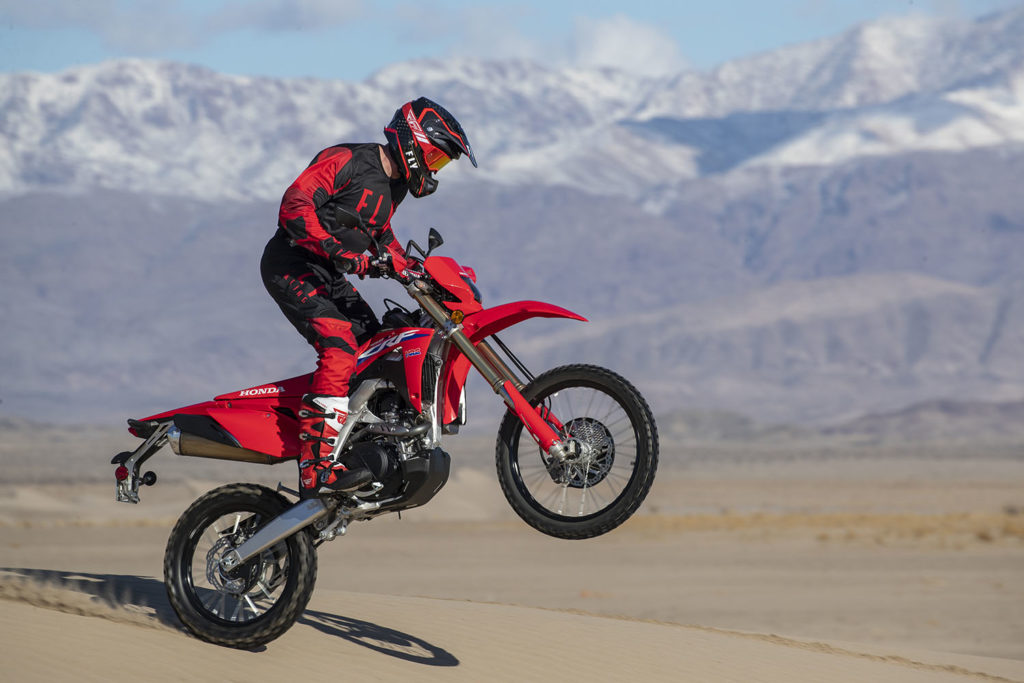
The Honda CRF450L debuted for 2019, bringing CRF450R motocross performance to a street-legal dual-sport. Its lightweight, compact, liquid-cooled 449cc single has a 12:1 compression ratio and a Unicam SOHC valve train with titanium valves. For 2021, Honda added an “R” to the model name (CRF450RL), lowered the price to $9,999 (from $10,399), revised the ECU and fuel-injection settings for better throttle response, and added new hand guards and fresh graphics.
Read our 2021 Honda CRF450RL Review
2021 Honda Gold Wing / Gold Wing DCT
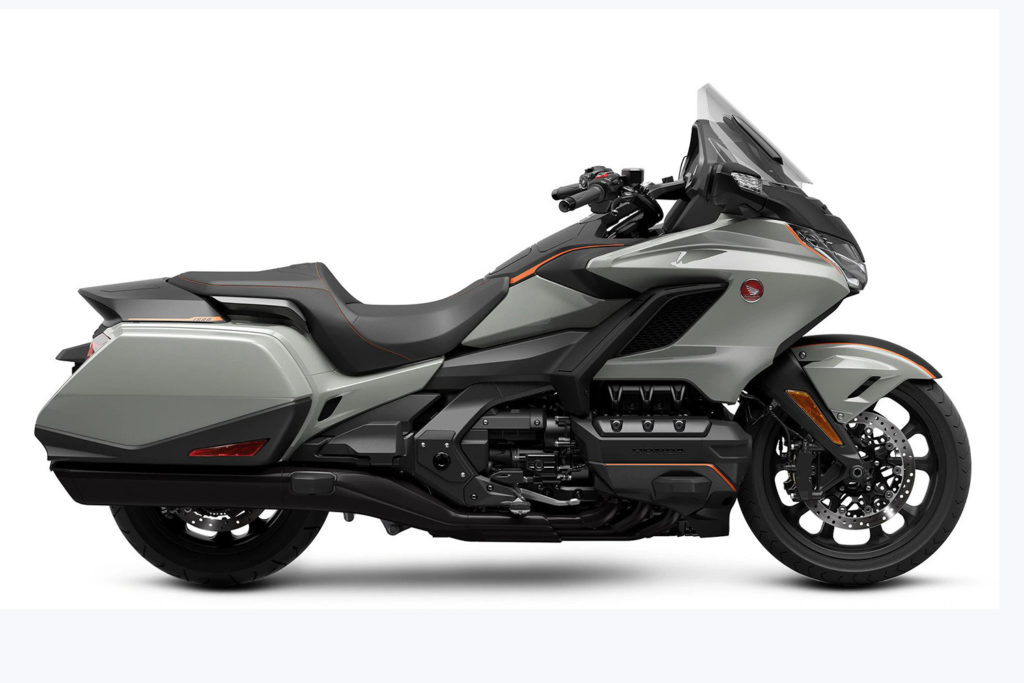
The Gold Wing has been Honda‘s flagship touring model for more than 40 years. It entered its sixth generation for the 2018 model year, with a complete overhaul to the GL1800 platform that made it lighter, sportier, and more technologically advanced. The standard Gold Wing (above) and trunk-equipped Gold Wing Tour (below) won Rider‘s 2018 Motorcycle of the Year award. Gold Wing updates for 2021 include a suede-like seat cover, colored seat piping, audio improvements, and red rear turnsignals. Pricing starts at $23,800 for the Gold Wing and $25,100 for the Gold Wing DCT (with 7-speed automatic Dual Clutch Transmission).
Read our 2021 Honda Gold Wing First Look Review
2021 Honda Gold Wing Tour / Gold Wing Tour DCT
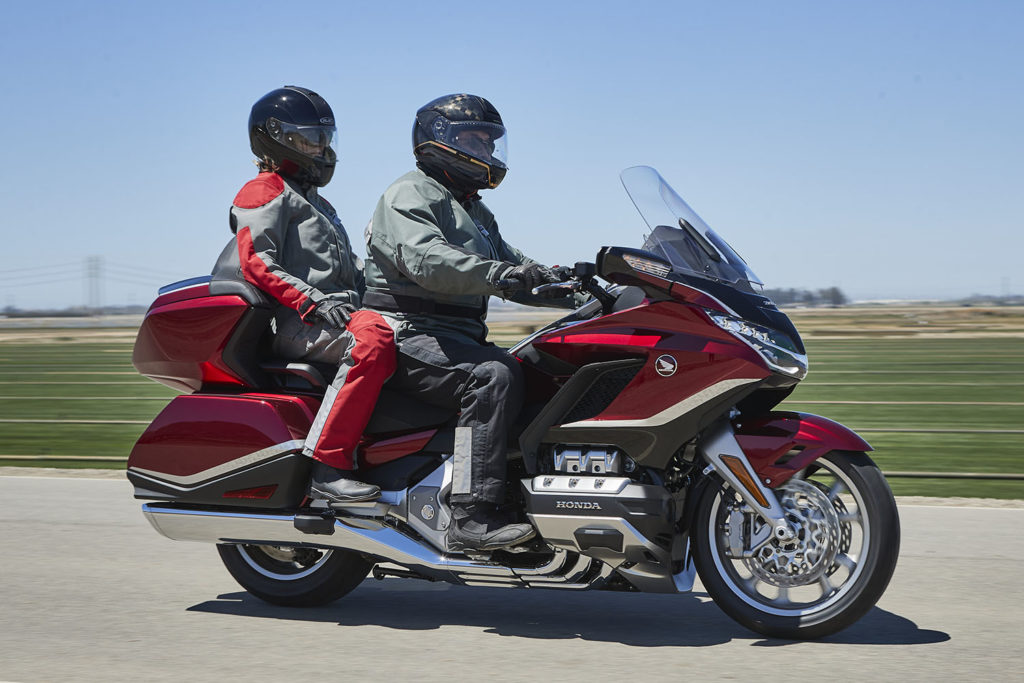
Updates for the Honda Gold Wing Tour include the same ones listed above for the standard Gold Wing: a suede-like seat cover, colored seat piping, audio improvements, and red rear turnsignals. But the Tour also got a larger top trunk (61 liters, up from 50) that now easily accepts two full-face helmets; total storage capacity is now 121 liters. The passenger seat’s backrest features a more relaxed angle, thicker foam, and a taller profile. Pricing starts at $23,800 for the Gold Wing and $25,100 for the Gold Wing DCT (with 7-speed automatic Dual Clutch Transmission).
Read our 2021 Honda Gold Wing Tour DCT First Ride Review
2021 Honda Rebel 1100 / Rebel 1100 DCT
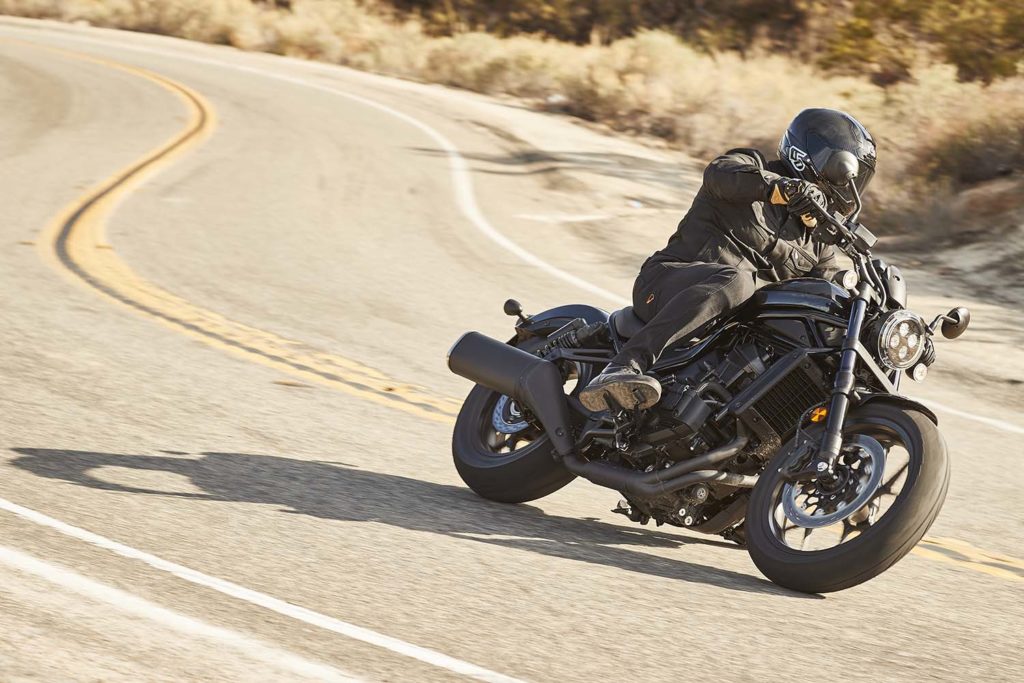
Joining the Rebel 300 and Rebel 500 in Honda‘s cruiser lineup for 2021 is the all-new Rebel 1100, which is powered by powered by a version of the liquid-cooled 1,084cc parallel-twin used in the 2020 Africa Twin, which uses a Unicam SOHC valve train and is available with either a 6-speed manual gearbox or a 6-speed automatic Dual Clutch Transmission. Standard equipment includes four ride modes (Standard, Sport, Rain and User, which is customizable), Honda Selectable Torque Control (aka traction control, which has integrated wheelie control), engine brake control, and cruise control. Pricing starts at $9,299 for the Rebel 1100 and $9,999 for the Rebel 1100 DCT.
Read our 2021 Honda Rebel 1100 DCT First Ride Review
2021 Honda Trail 125 ABS
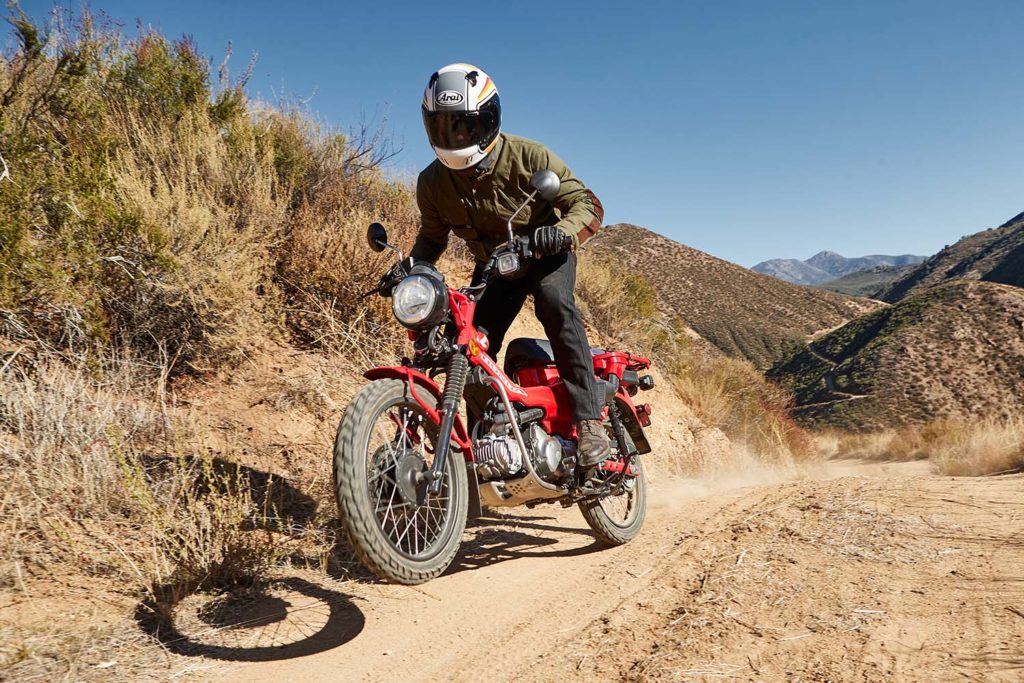
The latest addition to Honda‘s miniMOTO lineup is the Trail 125 ABS, which is powered by the same air-cooled 125cc Single found in the Grom, Monkey, and Super Cub C125. Like the Monkey and Super Cub, the Trail plays the retro card, pulling at heartstrings for a bike beloved by many decades ago. Just like its forefathers, the 2021 Honda Trail 125 proudly carries on the tradition of being a quaint and understated dual-sport, with a steel backbone frame, upright handlebar, square turnsignals, upswept exhaust, high-mount snorkel, and luggage rack. MSRP is $3,899.
Read our 2021 Honda Trail 125 ABS First Ride Review
2021 Indian Roadmaster Limited
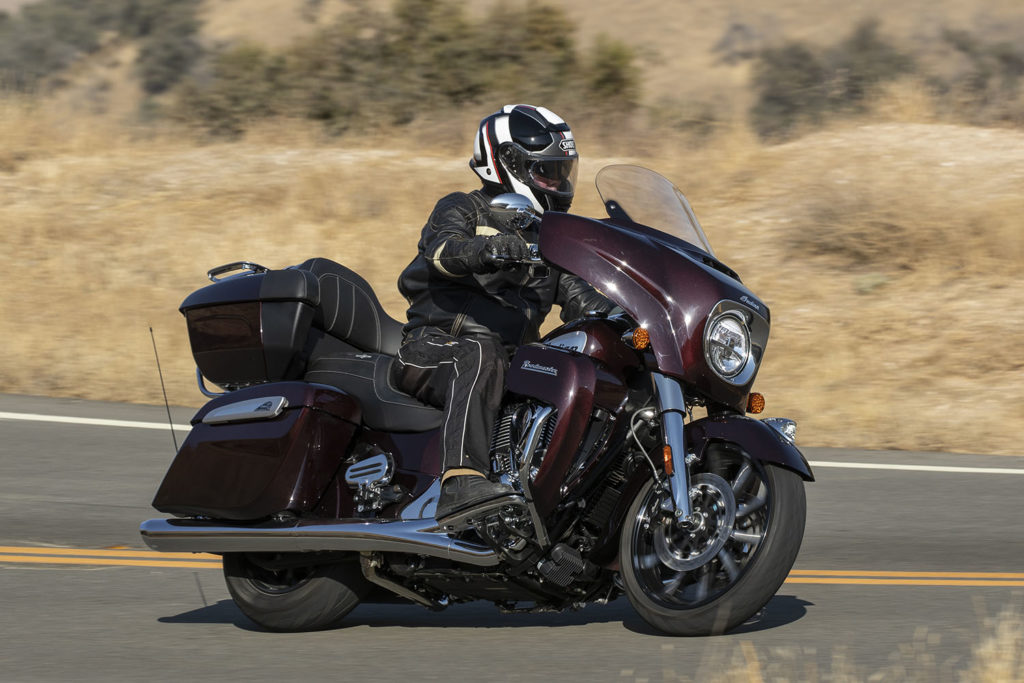
For 2021, the Indian Roadmaster Limited gets the larger 116ci Thunder Stroke V-Twin versus the original 111, and it has a modern streamlined fairing, open front fender, and slammed saddlebags. As a premium touring model, the Roadmaster Limited also gets Indian’s heated and cooled ClimaCommand seats and other upgrades. Pricing starts at $30,749.
Read our 2021 Indian Roadmaster Limited Tour Test Review
2021 Kawasaki KLX300
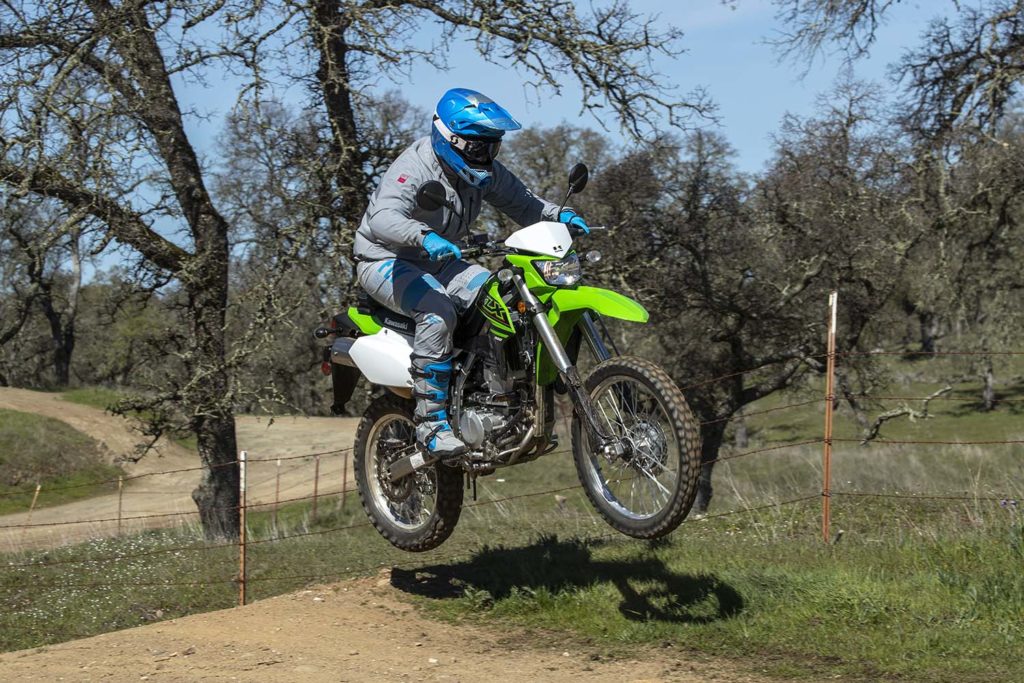
Like the Honda CRF300L above, Kawasaki‘s entry-level dual-sport got a displacement boost, which warranted a name change from KLX250 to KLX300. The 2021 KLX300 makes more thanks to a larger 292cc Single, which is liquid-cooled, fuel-injected, and has DOHC with four valves. It also uses more aggressive cam profiles, making it livelier than its predecessor. All of that is paired to a 6-speed gearbox and 14/40 final drive. Pricing starts at $5,599. And joining the KLX300 is a supermoto version, the KLX300SM (below).
Read our 2021 Kawasaki KLX300 First Ride Review
Watch our 2021 Kawasaki KLX300 and KLX300SM Video Review
2021 Kawasaki KLX300SM
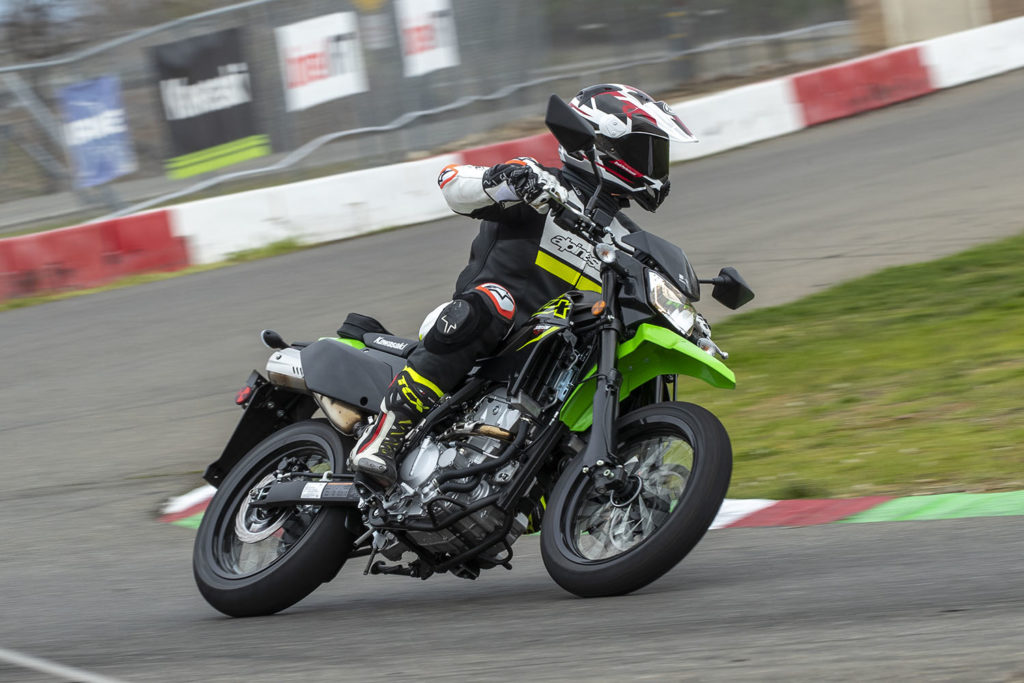
Joining the KLX300 dual-sport (above) in Kawasaki‘s 2021 lineup is an all-new supermoto version, the KLX300SM. It has street-oriented 17-inch wire-spoke wheels and IRC Road Winner RX-01 rubber, and the suspension is stiffer with slightly abbreviated travel. The KLX300SM also has taller final-drive gearing and a larger front brake rotor. Pricing starts at $5,599.
Read our 2021 Kawasaki KLX300SM First Ride Review
Watch our 2021 Kawasaki KLX300 and KLX300SM Video Review
2021 KTM 450 SMR
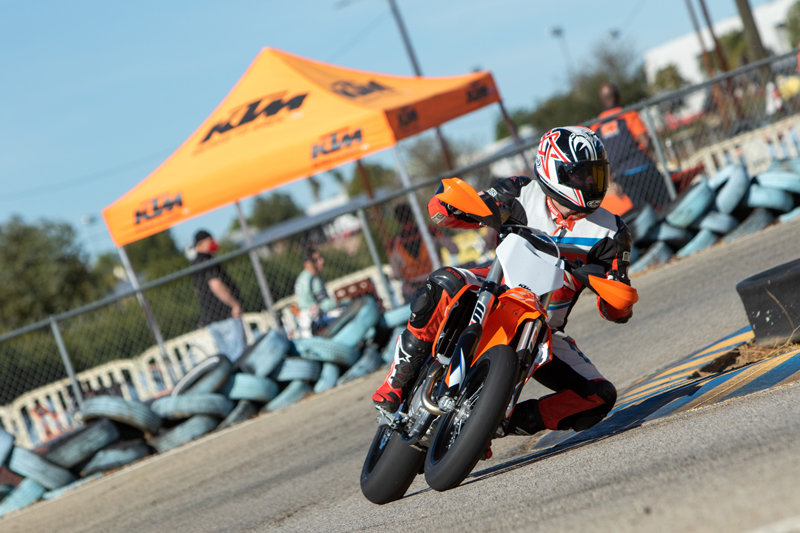
Speaking of supermoto, KTM‘s track-only, race-ready 450 SMR is back for 2021. Using the 450 SX-F motocross racer as its foundation, the SMR shares its 63-horsepower 450cc single-cylinder SOHC engine, lightweight steel frame, and cast-aluminum swingarm. To suit its supermoto purpose, wider triple clamps with a 16mm offset accommodate tubeless Alpina wheels (16.5-inch front and 17-inch rear) fitted with ultra-sticky Bridgestone Battlax Supermoto slicks. The WP Xact suspension is updated, reducing suspension travel to an ample 11.2 inches in the front and 10.5 inches in the rear, lowering the bike’s center of gravity and improving handling. A radially mounted Brembo M50 front caliper squeezes a 310mm Galfer floating rotor to deliver all the braking power you’ll ever need on a bike that weighs just 232 pounds wet. MSRP is $11,299.
Read our 2021 KTM 450 SMR First Ride Review
2021 KTM 890 Adventure R
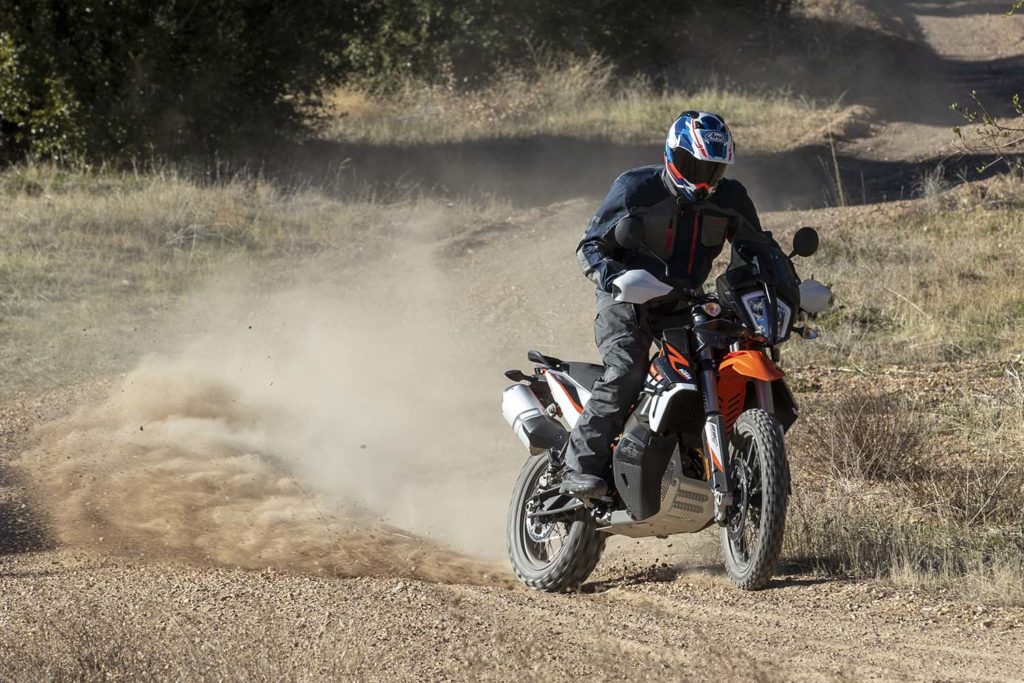
We selected the KTM 790 Adventure and 790 Adventure R as Rider‘s 2019 Motorcycle of the Year. Just two years later, KTM has updated the platform. Adapted from the 890 Duke R, the engine now has more displacement, a higher compression ratio, and other improvements. And like the 890 Duke R, the Adventure R has better throttle-by-wire response, a beefed-up clutch and a shortened shift lever stroke and lighter shift-detent spring for faster shifting. Chassis updates include an aluminum head tube, a lighter swingarm, revised suspension settings, and refinements to the braking system. Pricing starts at $14,199.
Read our 2021 KTM 890 Adventure R (Off) Road Test Review
Watch our 2021 KTM 890 Adventure R Video Review
2021 KTM 890 Adventure R Rally
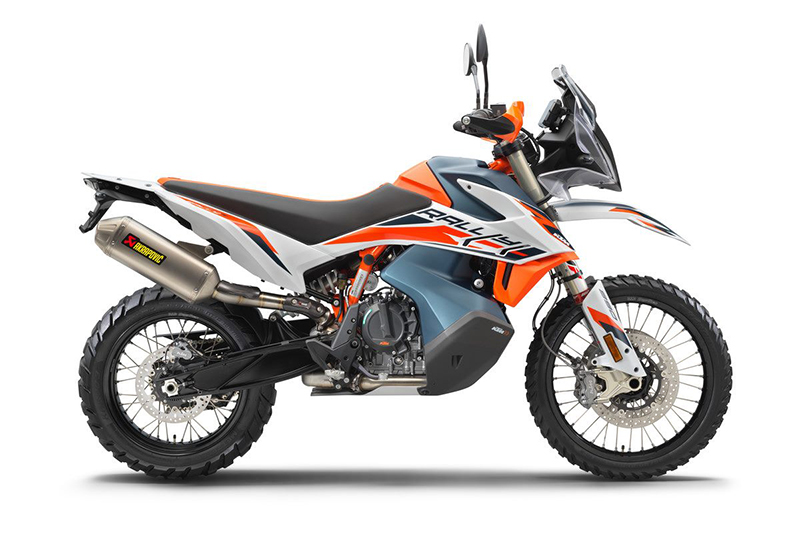
The limited-edition KTM 890 Adventure R Rally received the same updates as the 890 Adventure R (above), but is loaded with race-spec inspired components. Its development utilized feedback from Red Bull KTM Factory Racing team riders, Toby Price, and Sam Sunderland. Only 700 units of the 890 Adventure R Rally will be produced worldwide, with 200 slated for the North American market. Pricing starKTM 8ts at $19,999.
Read our 2021 KTM 890 Adventure R and 890 Adventure R Rally First Look Review
2021 KTM 890 Duke
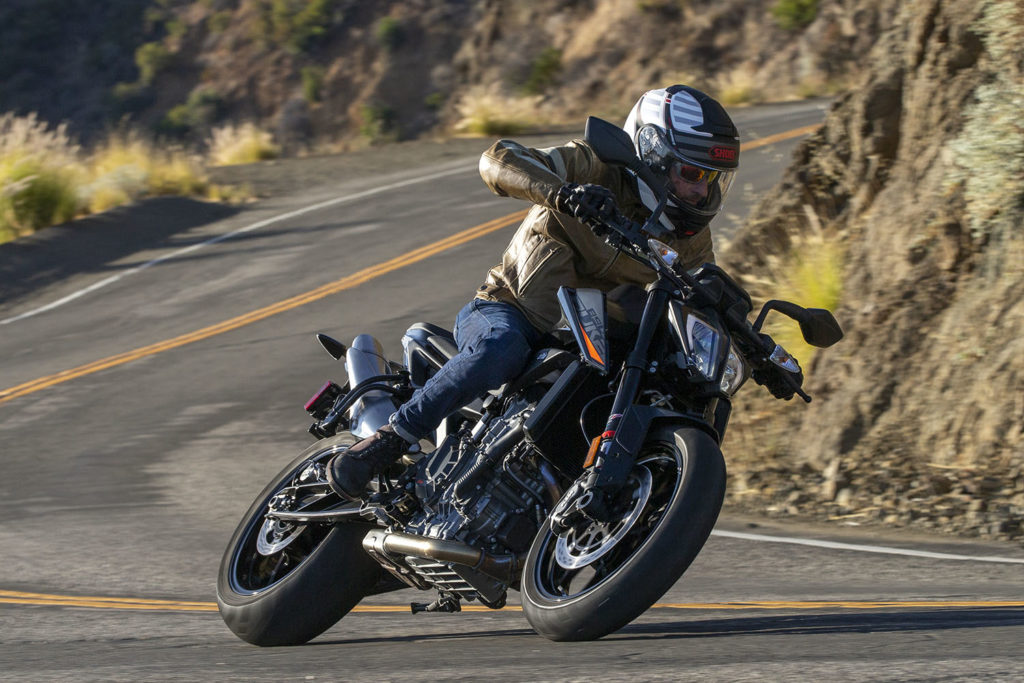
Powering the 2021 KTM 890 Duke is the same punchy, rip-roaring 889cc parallel-Twin producing a claimed 115 horsepower and 67.9 lb-ft of torque that’s also found in the 890 Duke R and 890 Adventure (above). Shared amongst the middleweight Duke family is a chromoly-steel frame, lightweight one-piece aluminum subframe and cast aluminum swingarm. By using the 889cc engine as a stressed member, the 890 Duke flaunts a mere 372-pound dry weight. We recently completed a comparison test of the 2021 KTM Duke lineup (200, 390, 890, and 1290), which will be posted soon.
Read our 2021 KTM 890 Duke First Look Review
2021 Moto Guzzi V7 Stone
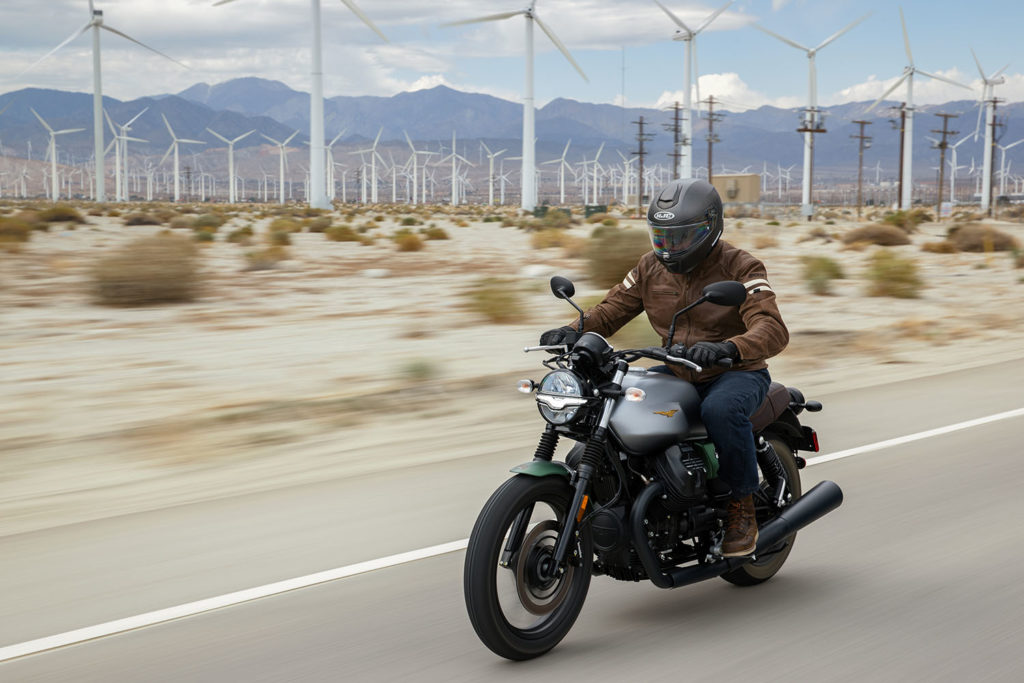
On March 15, 2021, Moto Guzzi celebrated its 100th anniversary of continuous production at its headquarters in Mandello del Lario, Italy. One of Moto Guzzi’s most iconic models, the V7, was updated for 2021, and is available in more modern V7 Stone and classic V7 Special versions. Both have a larger 853cc V-Twin derived from engine, variations of which are found in the V9 and V85 TT. They also get reduced effort from the single-disc dry clutch, a stiffer frame, a bigger swingarm with a new bevel gear for the cardan shaft drive, revised damping and a longer stroke for the preload-adjustable rear shocks, an updated ABS module, a wider rear tire, vibration-damping footpegs, and a thicker passenger seat. MSRP for the V7 Stone is $8,990, or $9,190 for the Centenario edition (shown above).
Read our 2021 Moto Guzzi V7 Stone First Ride Review
Watch our 2021 Moto Guzzi V7 Stone Video Review
2021 Moto Guzzi V7 Special
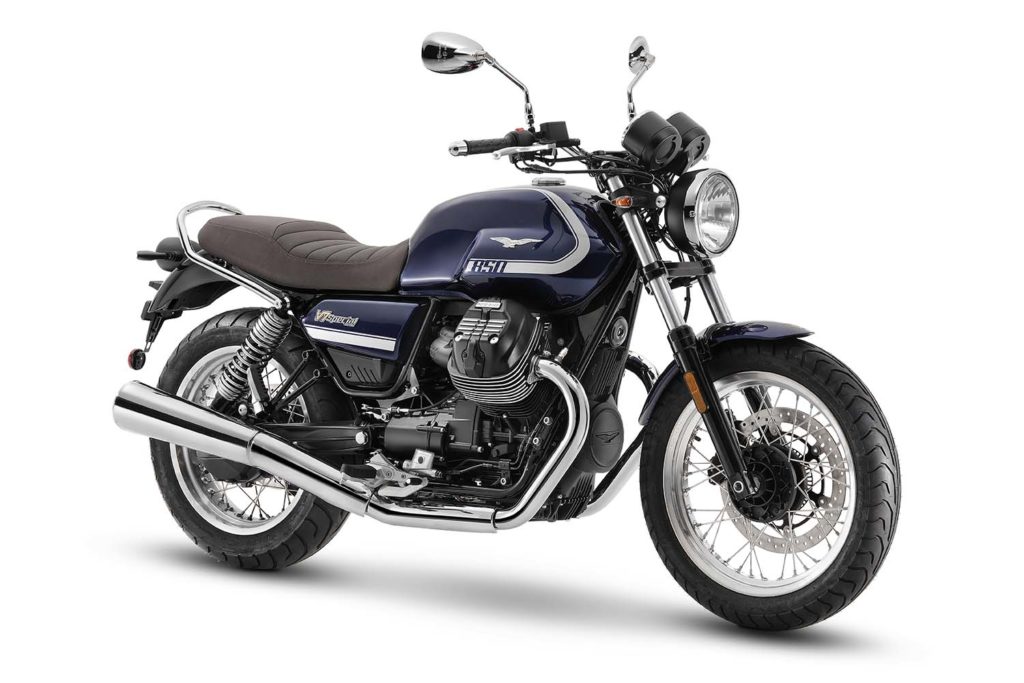
The 2021 Moto Guzzi V7 Special gets the same updates as the V7 Stone above. Whereas the V7 Stone has matte finishes, a single all-digital gauge, black exhausts, cast wheels, and an eagle-shaped LED set into the headlight, the V7 Special is classically styled, with spoked wheels, chrome finishes, dual analog gauges, and a traditional headlight. MSRP is $9,490.
Read our 2021 Moto Guzzi V7 Special and V7 Stone First Look Review
2021 Moto Guzzi V85 TT
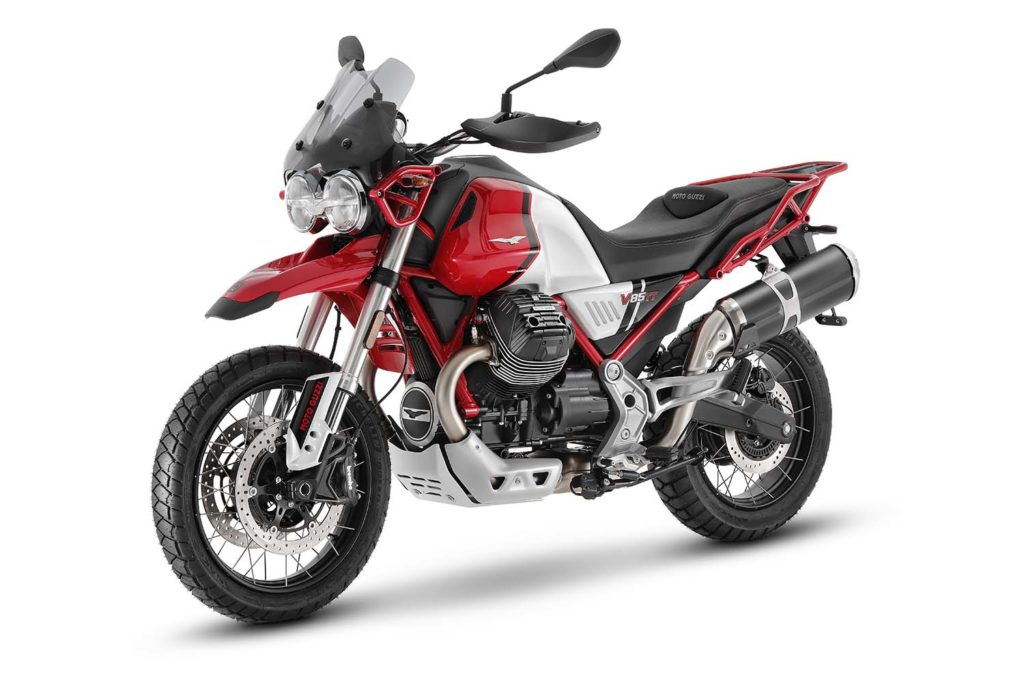
For 2021, the Moto Guzzi V85 TT gets some updates to its air-cooled 853cc 90-degree V-Twin. The revised powerplant offers more torque at low to midrange rpm thanks to optimized lift of the pushrod-and-rockers timing cams and tweaks to the engine control electronics. New spoked rims now mount tubeless tires, reducing unsprung weight by 3.3 pounds for better handling and facilitating plug-and-go flat repairs. Two new riding modes—Sport and Custom—join the existing three (Street, Rain, Off-road) to provide more flexibility in managing throttle response, traction control and ABS to suit rider preferences. Cruise control and the color TFT instrument panel also come standard. The 2021 V85 TT Adventure ($12,990) has standard saddlebags. The 2021 V85 TT Travel ($13,390) includes a Touring windscreen, side panniers from the Urban series, auxiliary LED lights, heated hand grips, and the Moto Guzzi MIA multimedia platform.
Read our 2021 Moto Guzzi V85 TT First Look Review
2021 Royal Enfield Himalayan
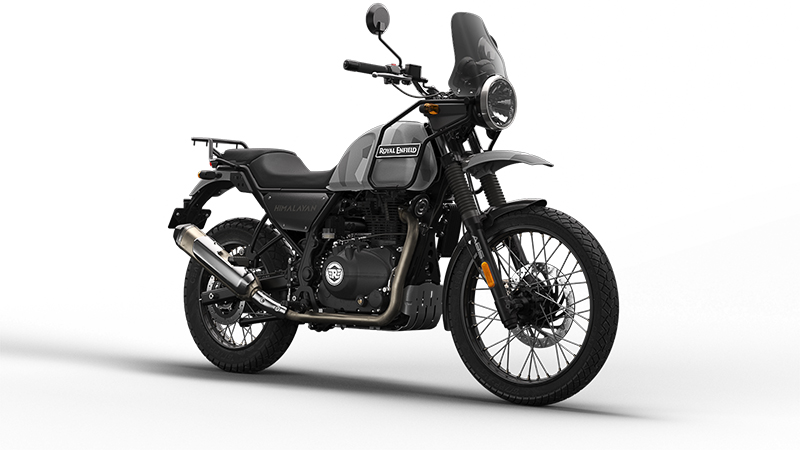
For 2021, the Royal Enfield Himalayan adventure bike, which is powered by an air-cooled 411cc Single, get several updates, including switchable ABS to help riders when riding off-road, a revised rear brake that is said to improve braking performance, a redesigned sidestand, and a new hazard light switch. MSRP is $4,999.
Read our 2021 Royal Enfield Himalayan First Look Review
2021 Royal Enfield Meteor 350
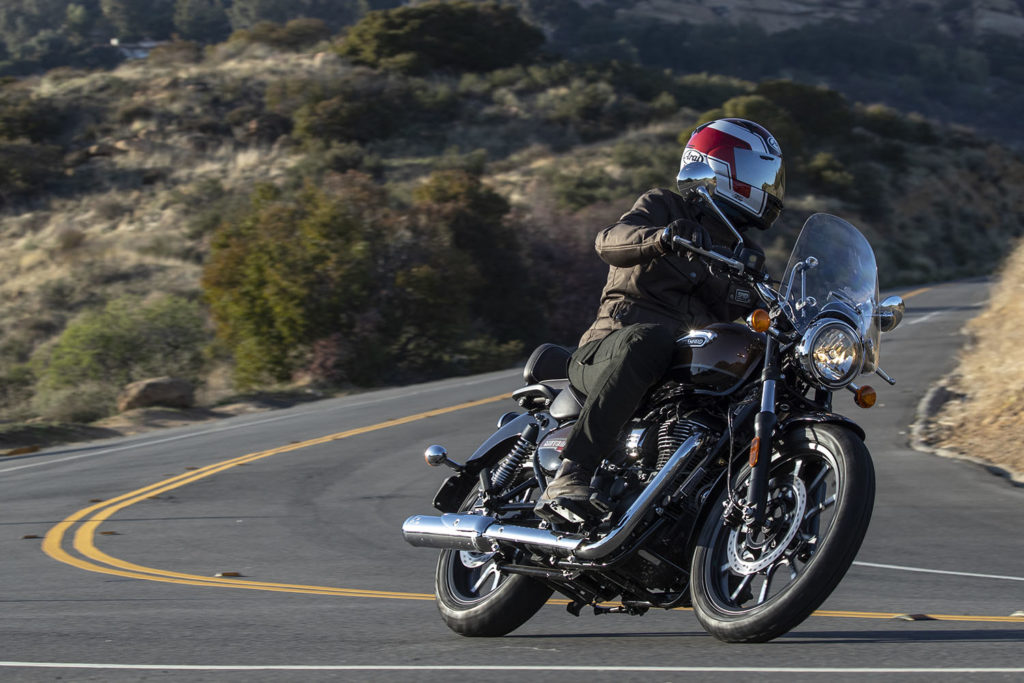
For 2021, the Royal Enfield family gets a new addition — the Meteor 350, a light, affordable cruiser powered by an all-new air-cooled 349cc single with SOHC actuating two valves. Available in three budget-friendly trim packages, variants include the base-model Fireball ($4,399) with a black exhaust system; the Stellar ($4,499), with a chrome exhaust and a passenger backrest; and the Supernova ($4,599), which adds a windshield and a two-tone paint scheme.
Read our 2021 Royal Enfield Meteor 350 Road Test Review
Watch our 2021 Royal Enfield Meteor 350 Video Review
2021 Triumph Speed Triple 1200 RS
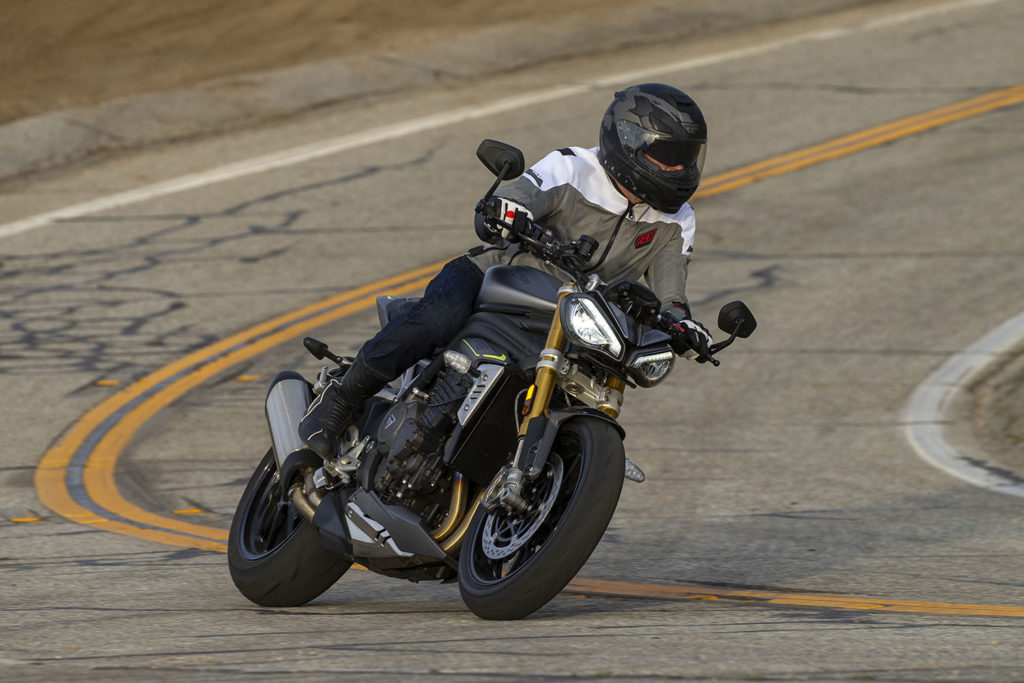
Triumph‘s Speed Triple is one of the original hooligan bikes. It has evolved over the years since its introduction in 1994, and for 2021 the Speed Triple 1200 RS is the lightest, most powerful, highest-spec version yet. Its all-new 1,160cc Triple (up from 1,050cc) makes 165 horsepower at the rear wheel, and the RS is equipped with state-of-the-art electronics, fully adjustable Öhlins suspension, Brembo Stylema front calipers, and much more. Pricing starts at $18,300.
Read our 2021 Triumph Speed Triple 1200 RS Road Test Review
2021 Triumph Tiger 850 Sport
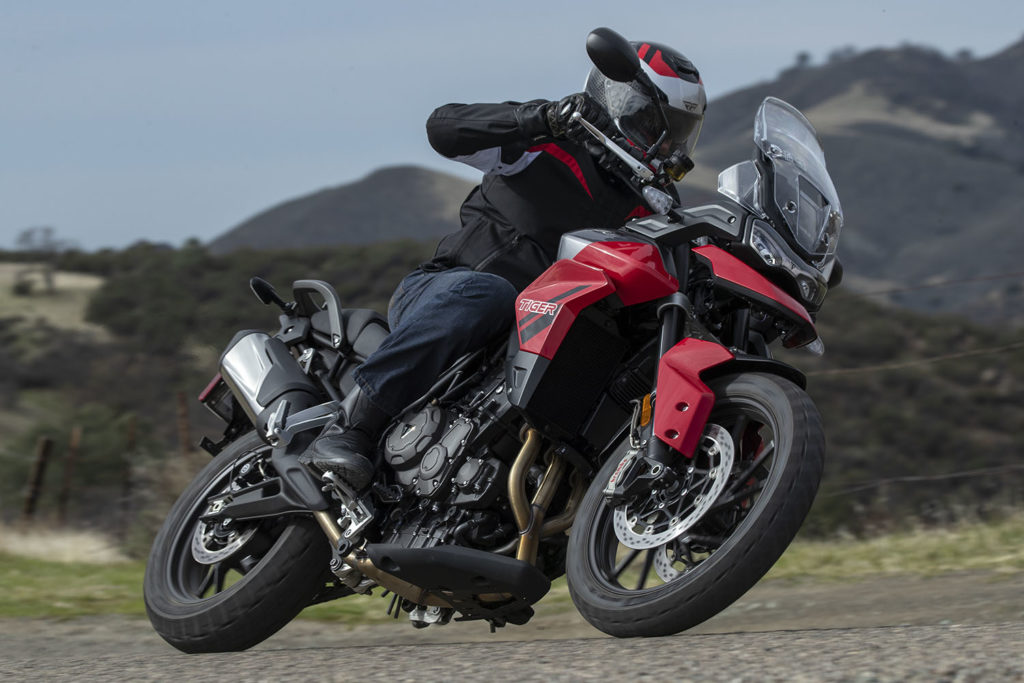
The 2021 Triumph Tiger 850 Sport, a street-focused adventure bike powered by the same liquid-cooled 888cc in-line triple as the Tiger 900 models, but it has been detuned to 82 horsepower at 8,400 rpm and 58 lb-ft of torque at 6,700 rpm at the rear wheel, as measured on Jett Tuning‘s dyno, which is about 10 horsepower lower. To keep the price down, Triumph also reduced the number of ride modes to two (Road and Rain) and limited suspension adjustability to rear preload. But this is no bargain-bin special. It has Marzocchi suspension front and rear, and it has Brembo brakes, with Stylema front calipers and a radial front master cylinder. ABS is standard but not switchable, and traction control is also standard but is switchable.
Watch our 2021 Triumph Tiger 850 Sport Video Review
2021 Triumph Trident 660
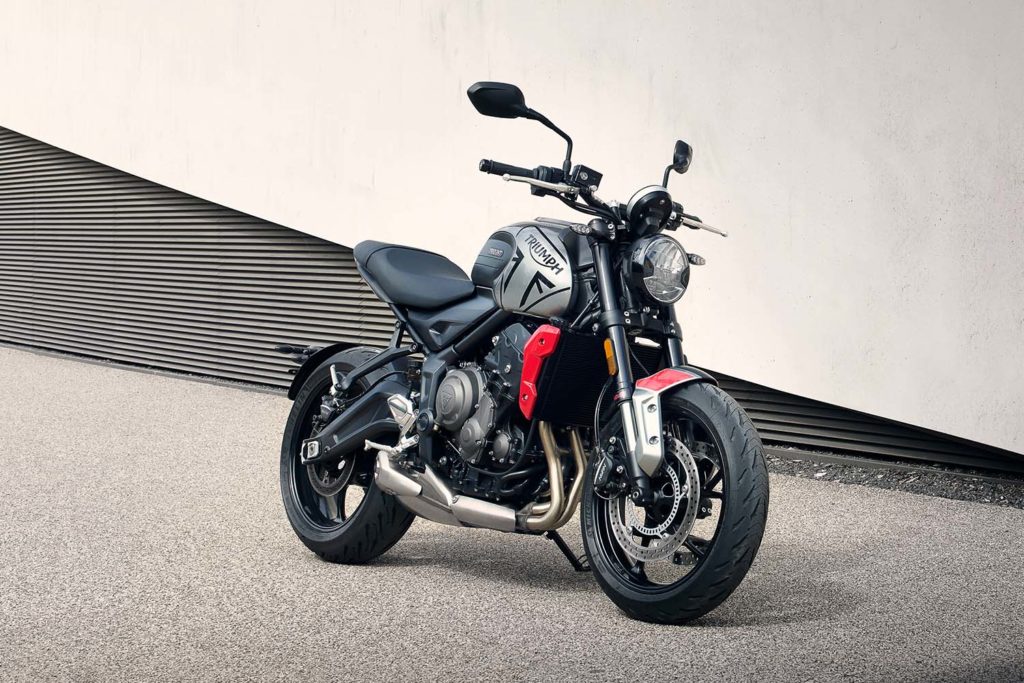
The 2021 Triumph Trident 660 is a triple-cylinder-powered roadster in the the twin-cylinder-dominated middleweight class. It’s powered by a liquid-cooled, DOHC, 660cc inline-Triple making a claimed 79.9 horsepower at 10,250 rpm and 47 lb-ft of torque at 6,250 rpm, and it is equipped with ABS, switchable traction control, and selectable ride modes. MSRP is $7,995.
Read our 2021 Triumph Trident 660 First Look Review
2021 Yamaha MT-07
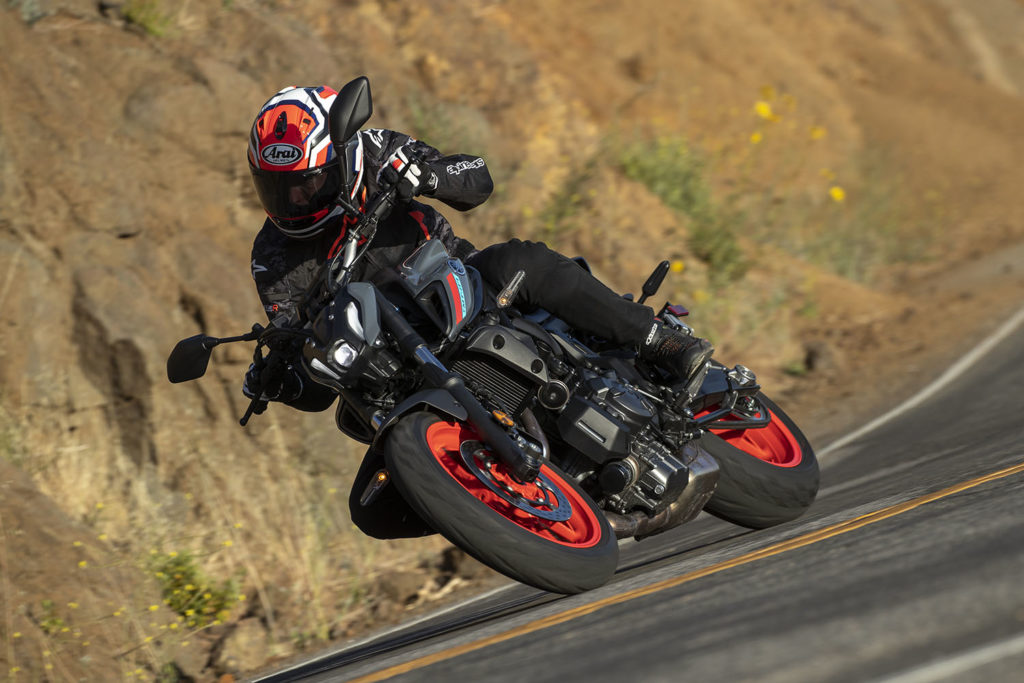
Updates for 2021 to the Yamaha MT-07, its best-selling middleweight naked sportbike, include revisions to the 689cc liquid-cooled CP2 (Cross Plane 2-cylinder) parallel-Twin engine to meet Euro 5 regulations and to improve low-rpm throttle response. The MT-07 has a new 2-into-1 exhaust, revisions to the 6-speed gearbox to improve shifting feel, LED lighting all around, new instrumentation, revised ergonomics, and new styling that brings it closer in appearance to the larger MT-09 (below). Base price is $7,699, and three color choices are available: Storm Fluo, Matte Raven Black, and Team Yamaha Blue.
Read our 2021 Yamaha MT-07 Road Test Review
2021 Yamaha MT-09
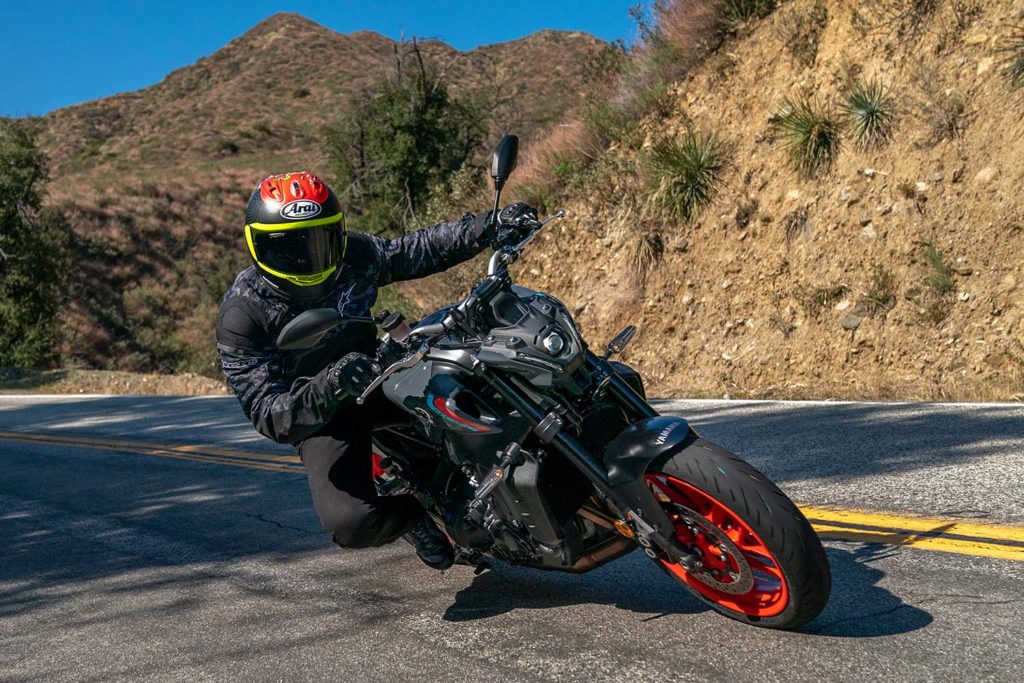
Now in its third generation, fully 90% of the Yamaha MT-09 naked sportbike is new for 2021. Its has an entirely new 890cc CP3 (Cross Plane 3-cylinder) inline-Triple engine, a thoroughly updated and significantly stiffer chassis, state-of-the-art electronics, and a fresh look that results in the most refined MT-09 yet. The base price increased by $400 to $9,399, but the four extra Benjamins are worth it. The MT-09 is available in Storm Fluo (shown above), Matte Raven Black, and Team Yamaha Blue. There’s also an MT-09 SP ($10,999) with exclusive special-edition coloring, premium KYB and Öhlins suspension, and cruise control.
Read our 2021 Yamaha MT-09 First Ride Review
Watch our 2021 Yamaha MT-09 Video Review
2021 Yamaha Ténéré 700
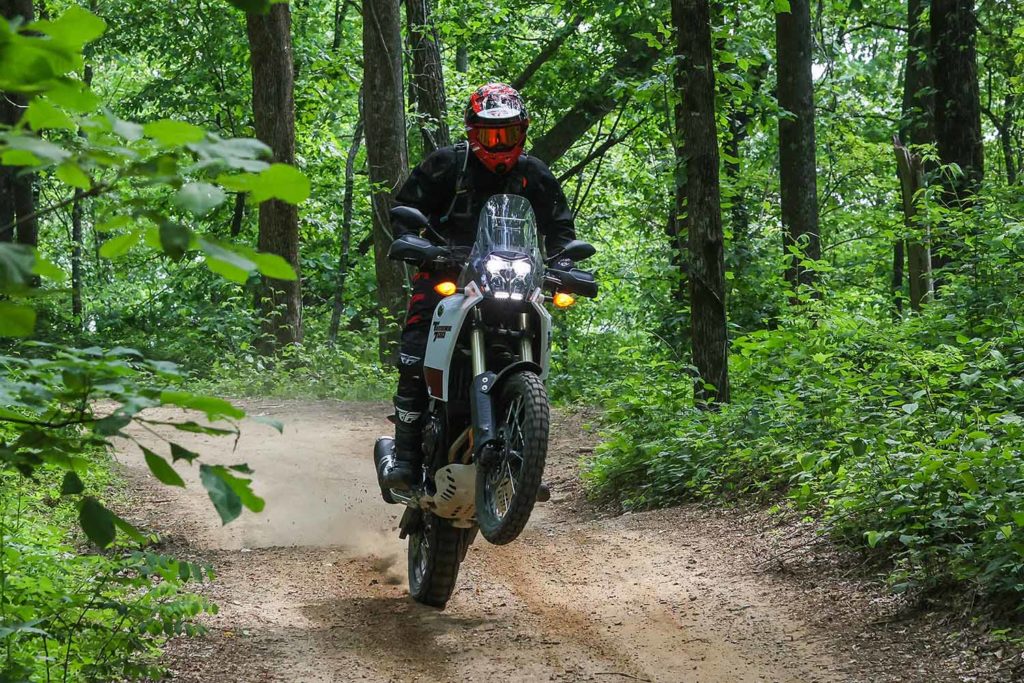
After being teased for several years, Yamaha‘s highly anticipated Ténéré 700 adventure bike made its U.S. debut in the summer of 2021, bringing some excitement during a challenging pandemic year. It’s powered by the versatile 689cc liquid-cooled CP2 (Cross Plane 2-cylinder) parallel-Twin engine from the MT-07 (above), modified for adventure duty with a new airbox with a higher snorkel, a revised cooling system, an upswept exhaust, and a final gear ratio of 46/15 vs. 43/16. The rest of the bike is all-new, including the narrow double-cradle tubular-steel frame, triangulated (welded-on) subframe, double braced steering head and aluminum swingarm, adjustable long-travel suspension, switchable ABS, and more. Base price is $9,999 and its available in Ceramic Ice, Intensity White (shown above), and Matte Black.
Read our 2021 Yamaha Tenere 700 First Ride Review
Read our 2021 Yamaha Tenere 700 Tour Test Review
Watch our 2021 Yamaha Tenere 700 Video Review
2021 Yamaha Tracer 9 GT
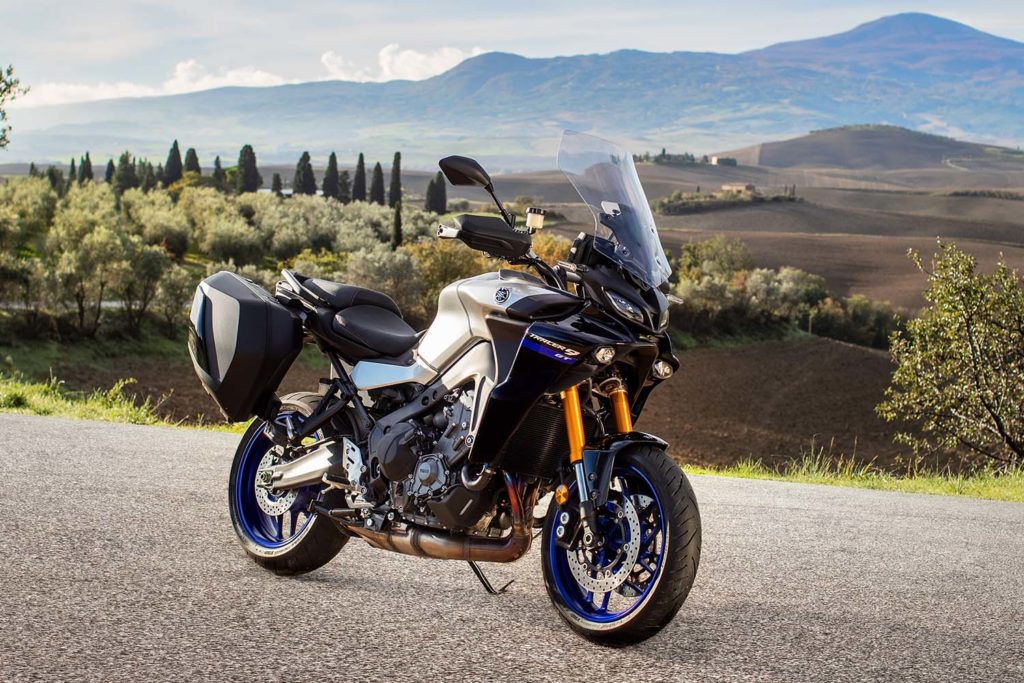
Now in its third generation, Yamaha’s middleweight sport-tourer — now called the Tracer 9 GT — is new from the ground up for 2021. It has a larger, more powerful engine, a new frame, and a state-of-the-art electronics package that includes semi-active suspension. With these updates comes a higher price, and MSRP is now $14,899. It’s available in Liquid Metal (shown above) and Redline.
Read our 2021 Yamaha Tracer 9 GT First Look Review
2021 Zero FXE
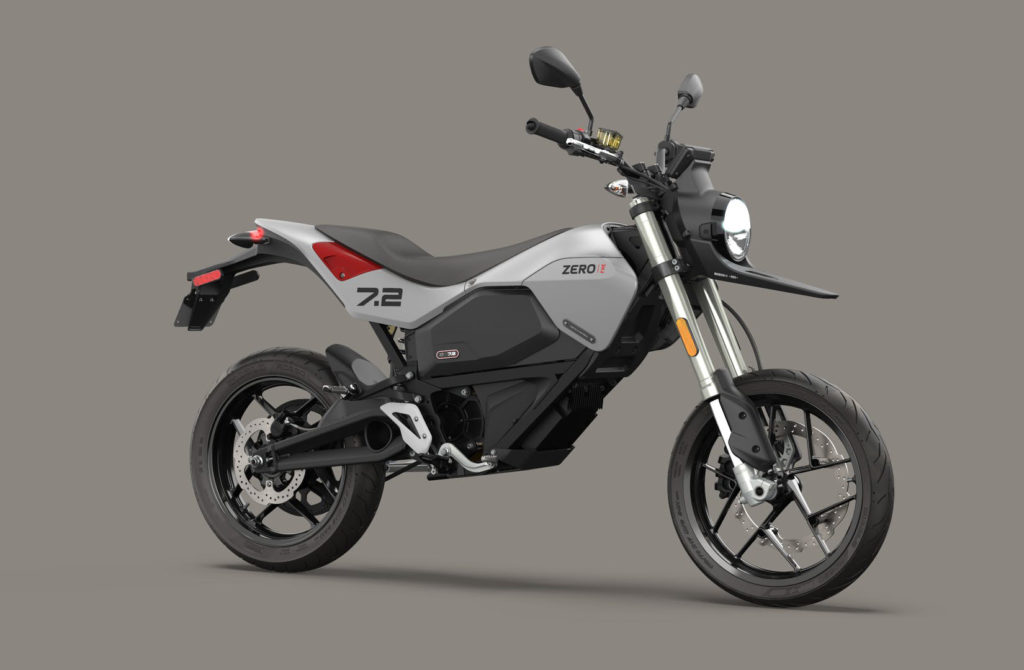
New for 2021, Zero has taken the existing frame from the FX and added a redesigned body. The starkly modern, supermoto styling is very similar in appearance to the FXS – tall, slim and sporting a raised front mudguard. However, the FXE is capable of a claimed 100-mile range on a full battery charge and costs $11,795, which can be bought down to around $10,000 depending upon available EV rebates and credits.
Compared to many of its heavier, more expensive competitors the FXE is a lightweight and thrilling runabout, and what it gives up in range it makes up for in accessibility and potential for fun. The FXE makes for a credible commuter bike, capable of taking to the highway but ideal to zip around town on.
The post 2021 Motorcycle Buyers Guide: New Street Models first appeared on Rider Magazine.
Source: RiderMagazine.com

